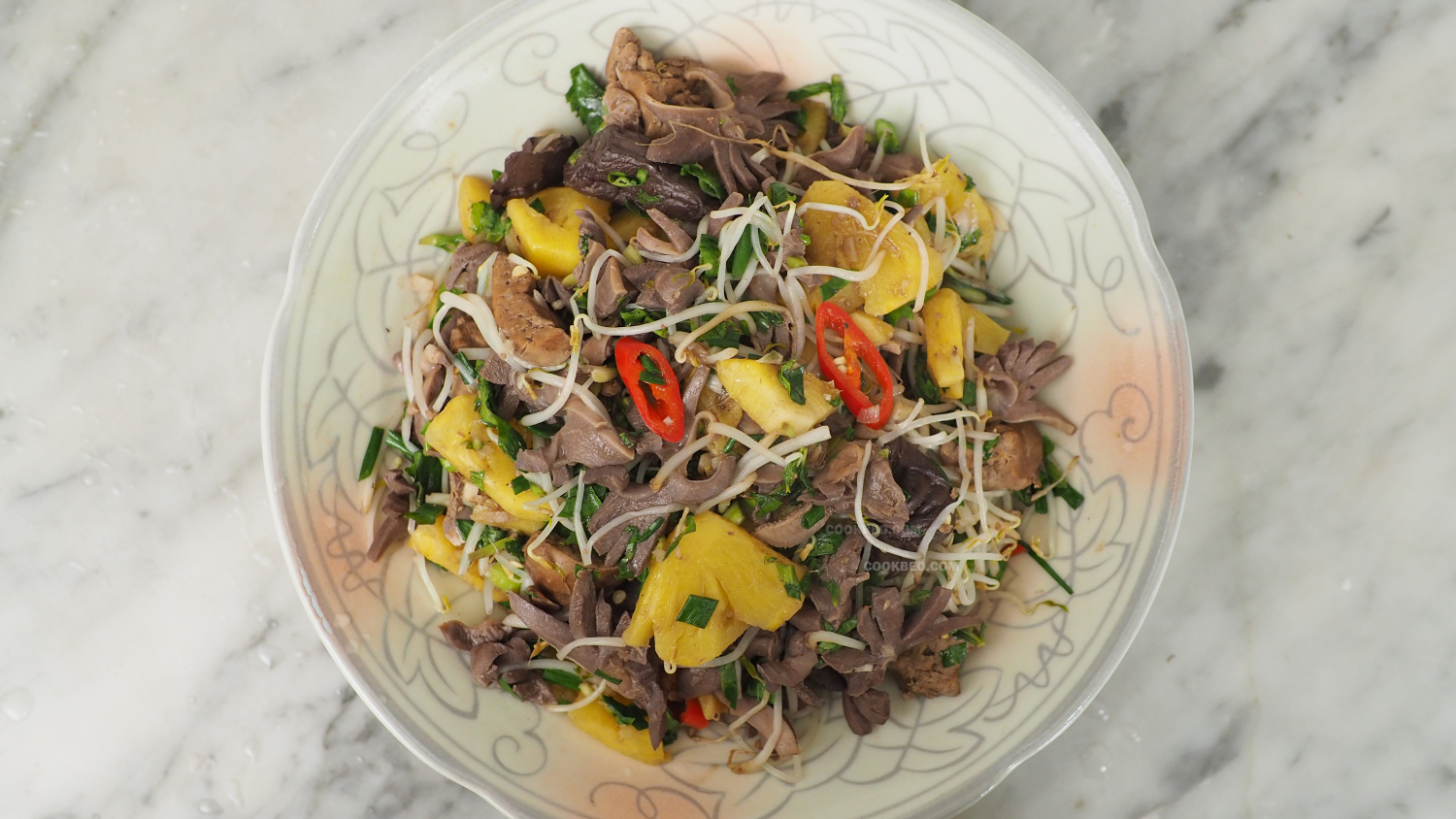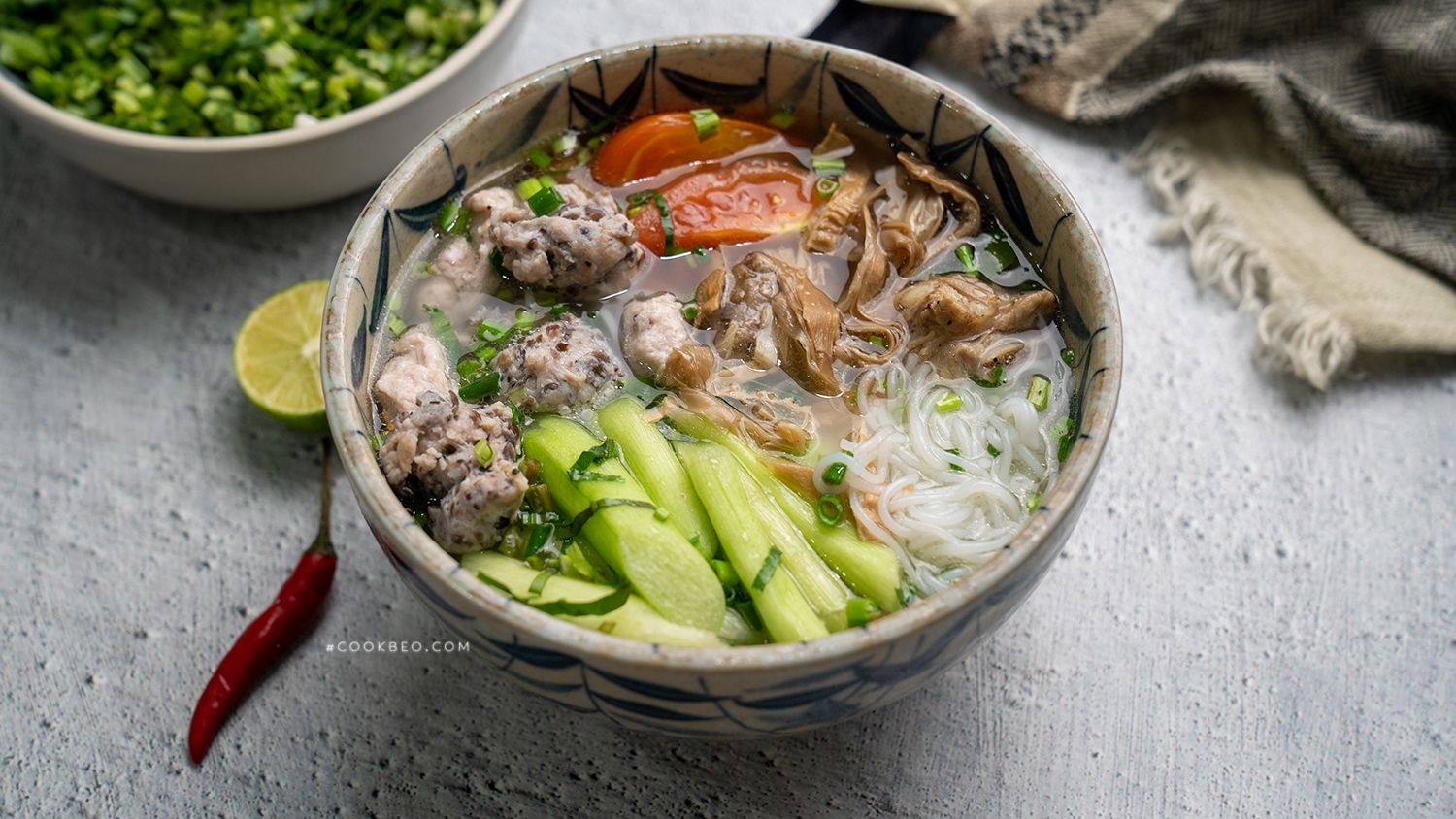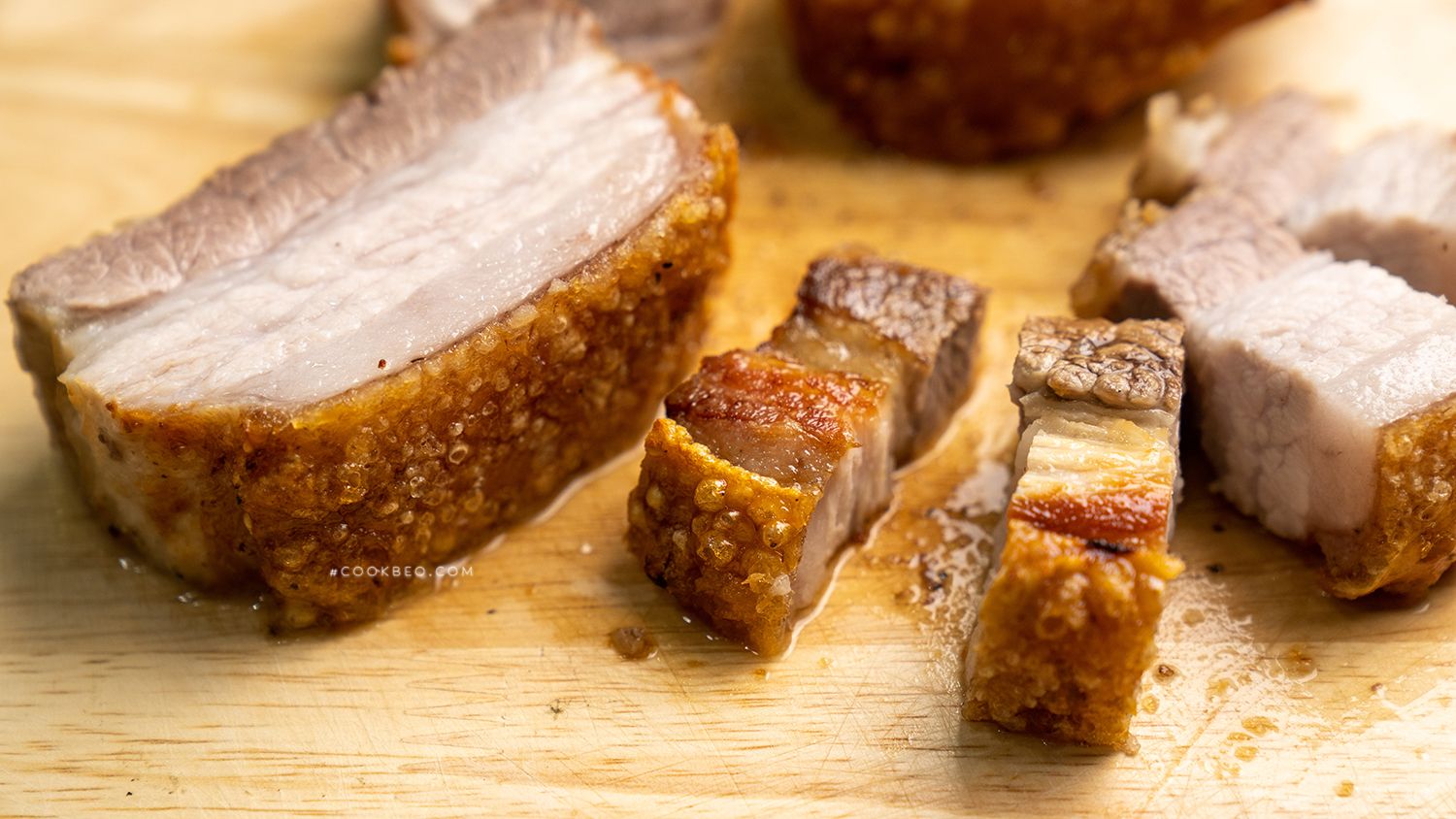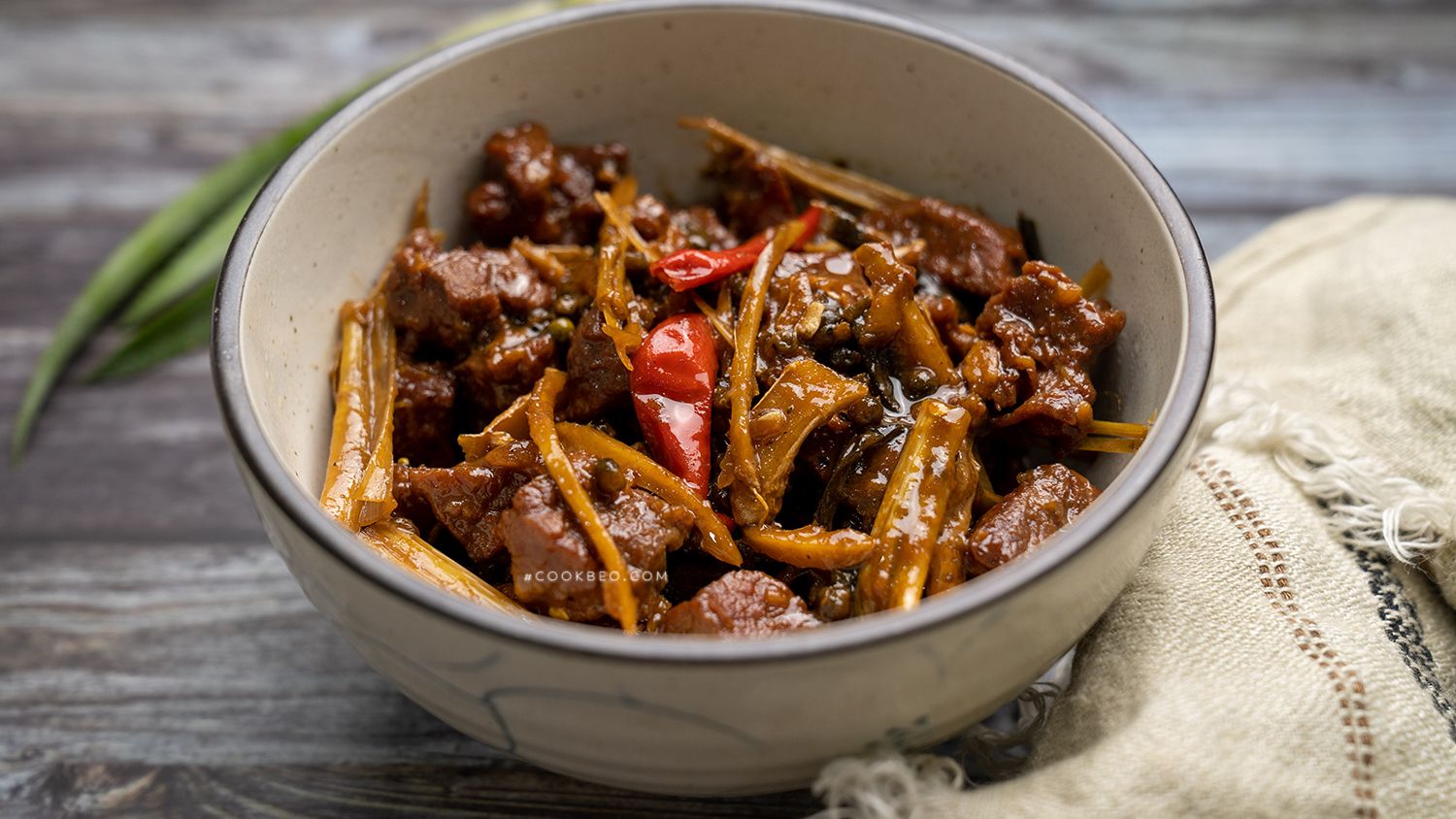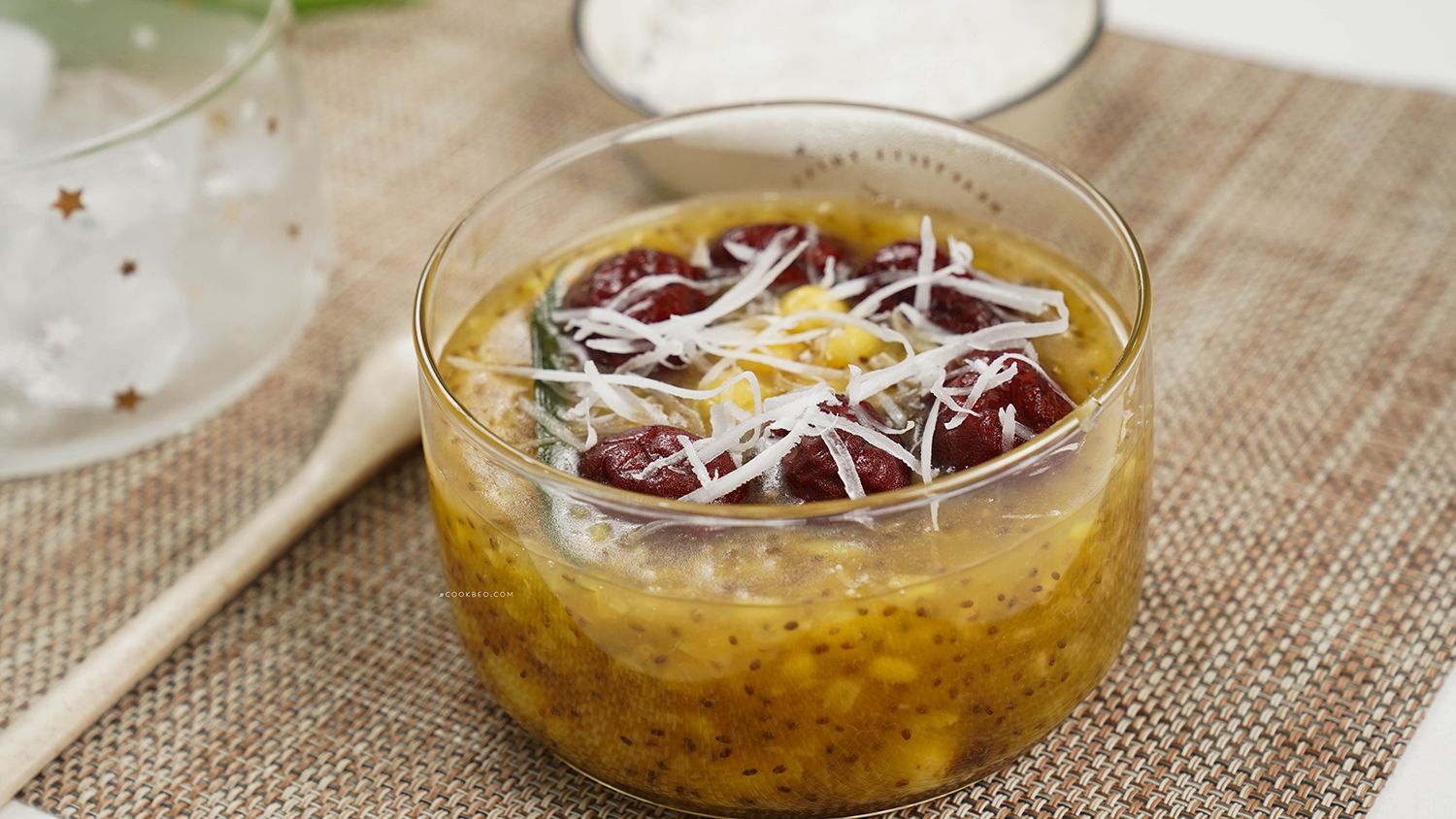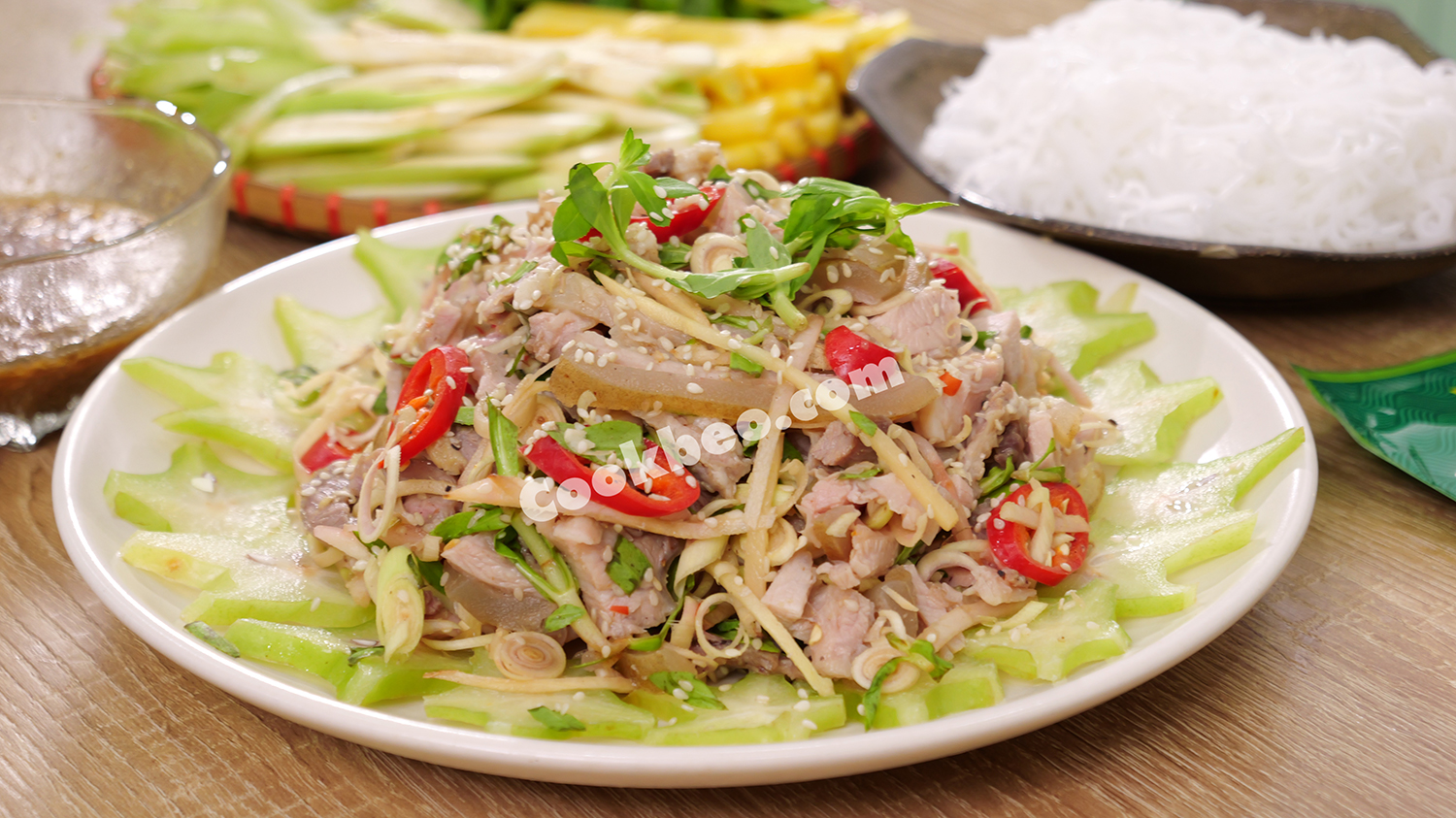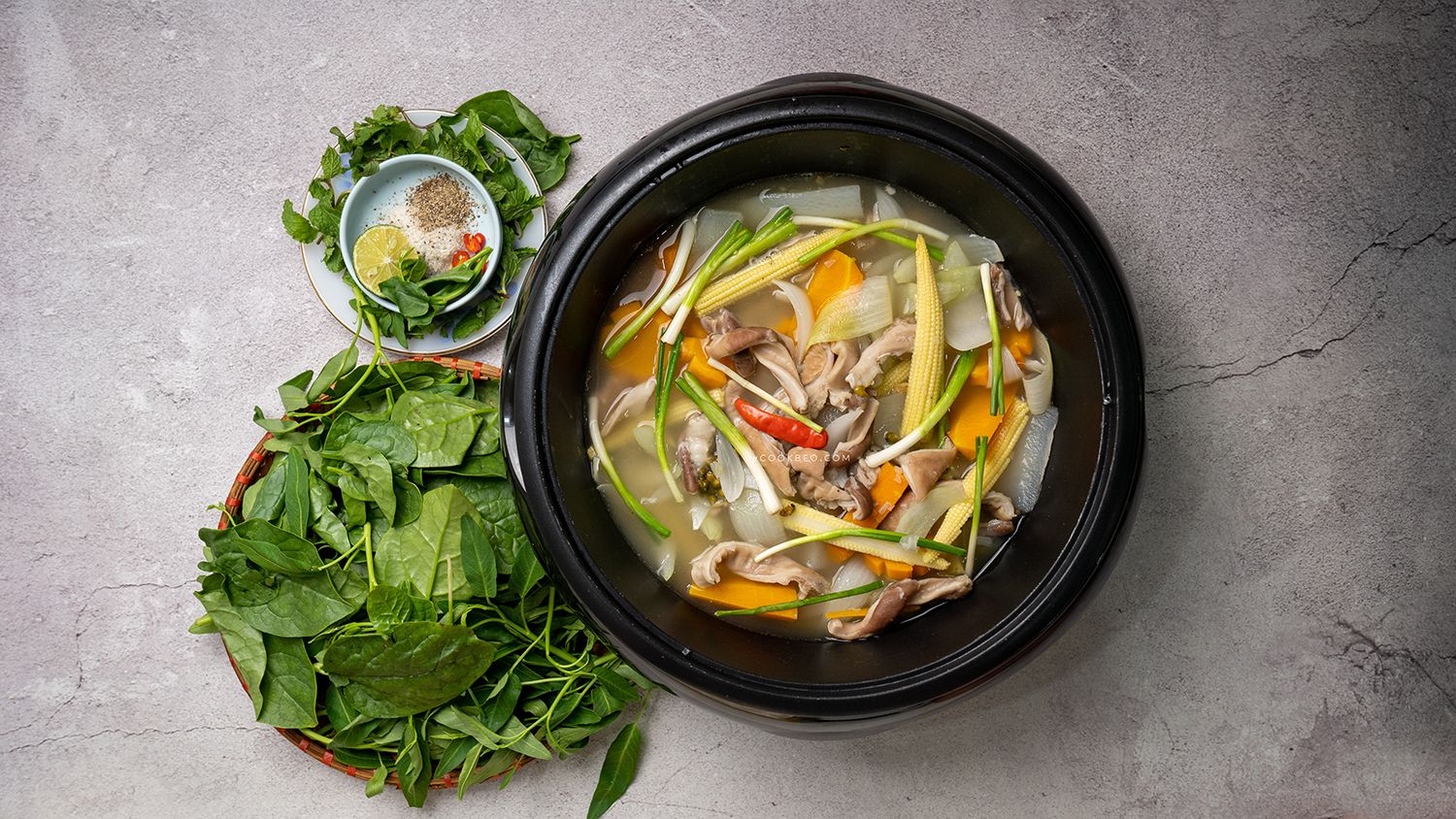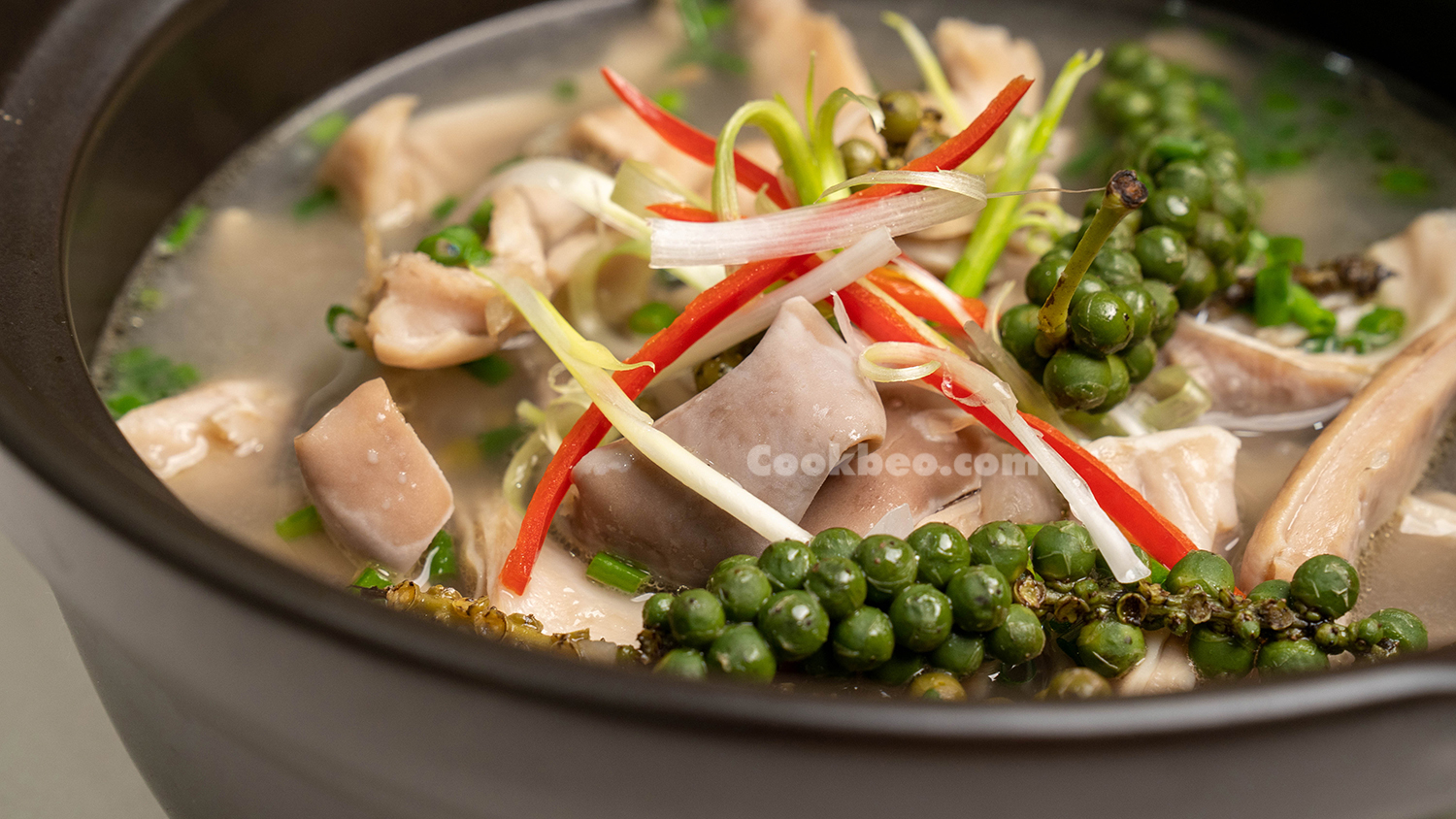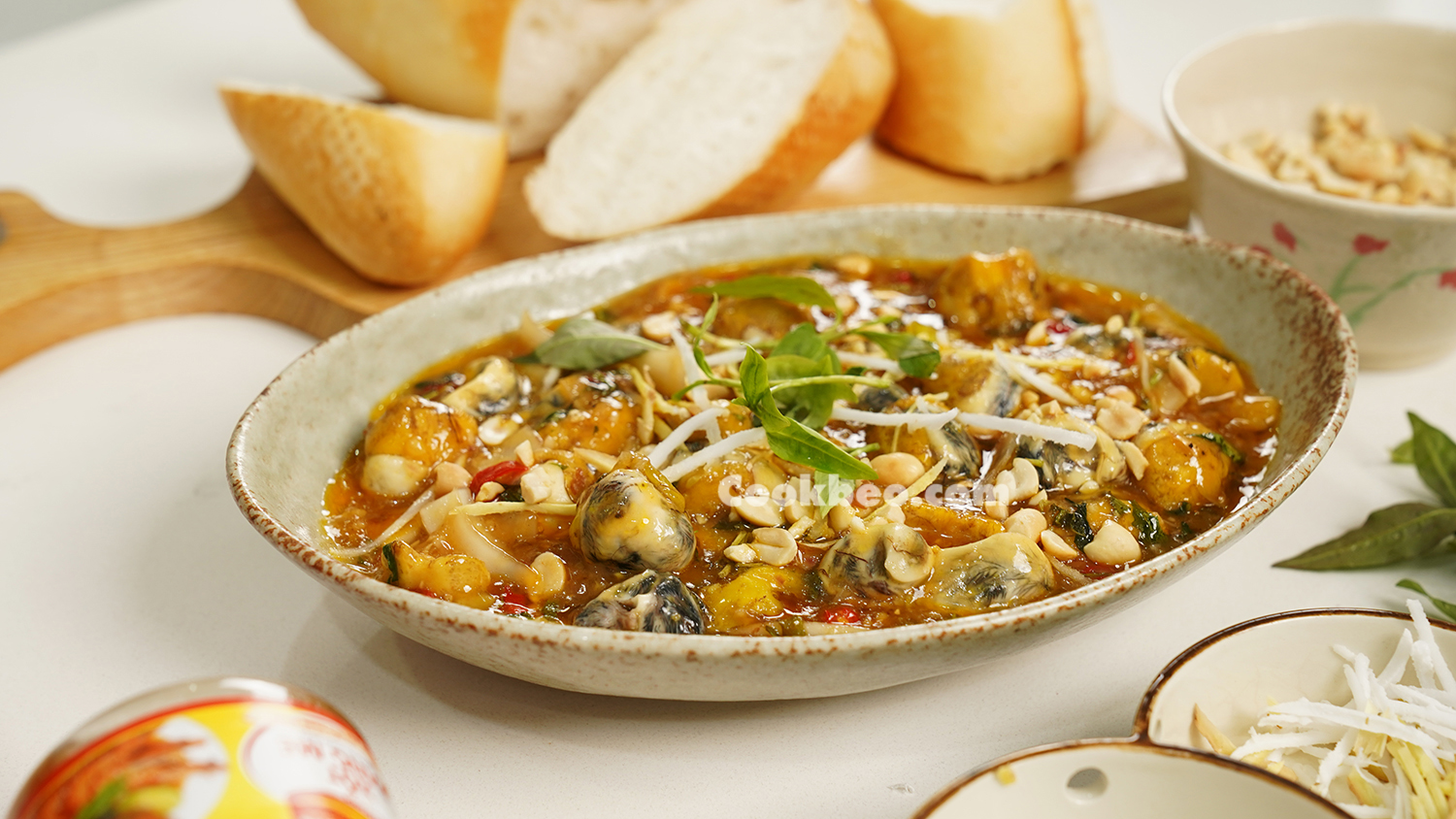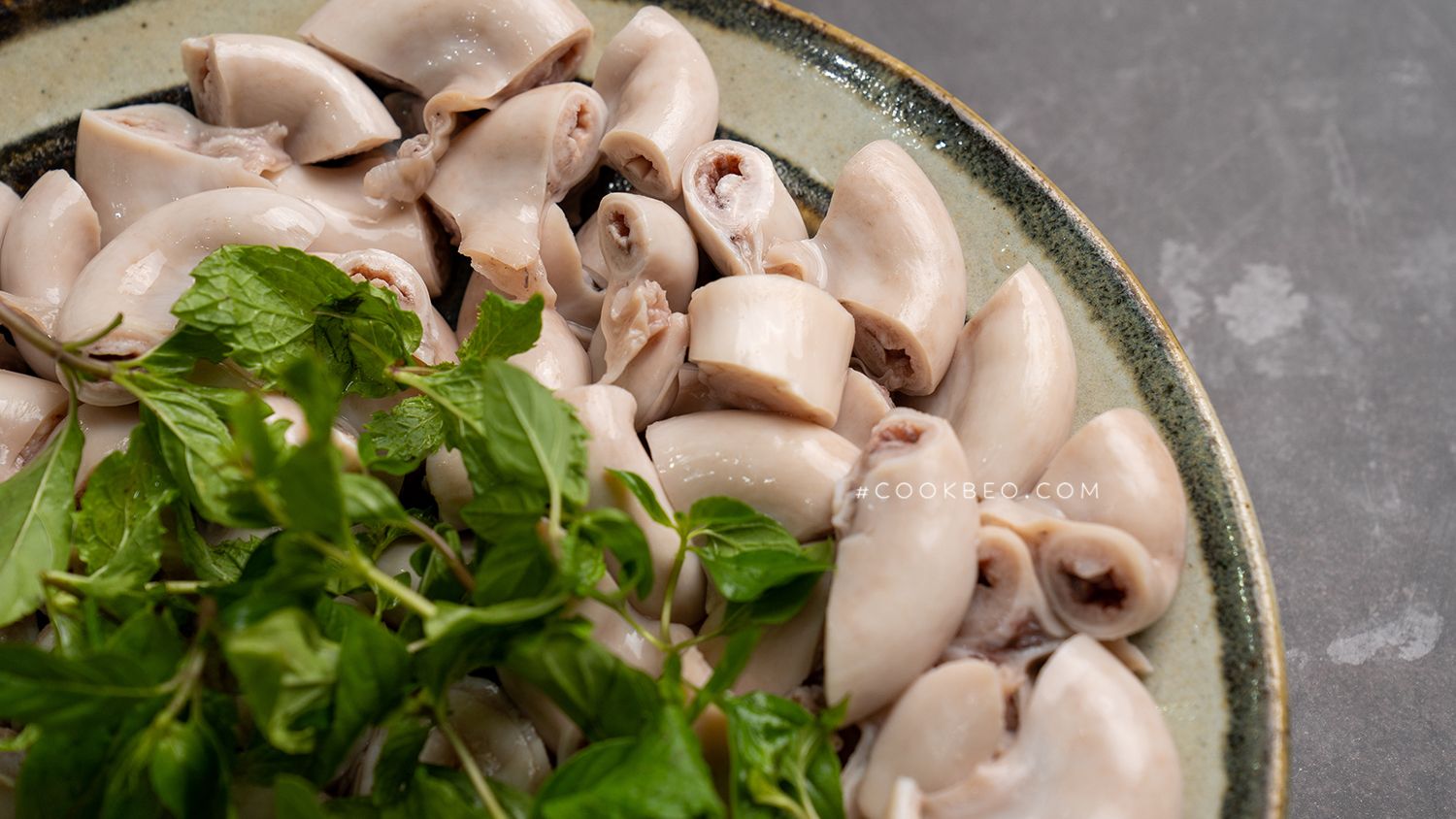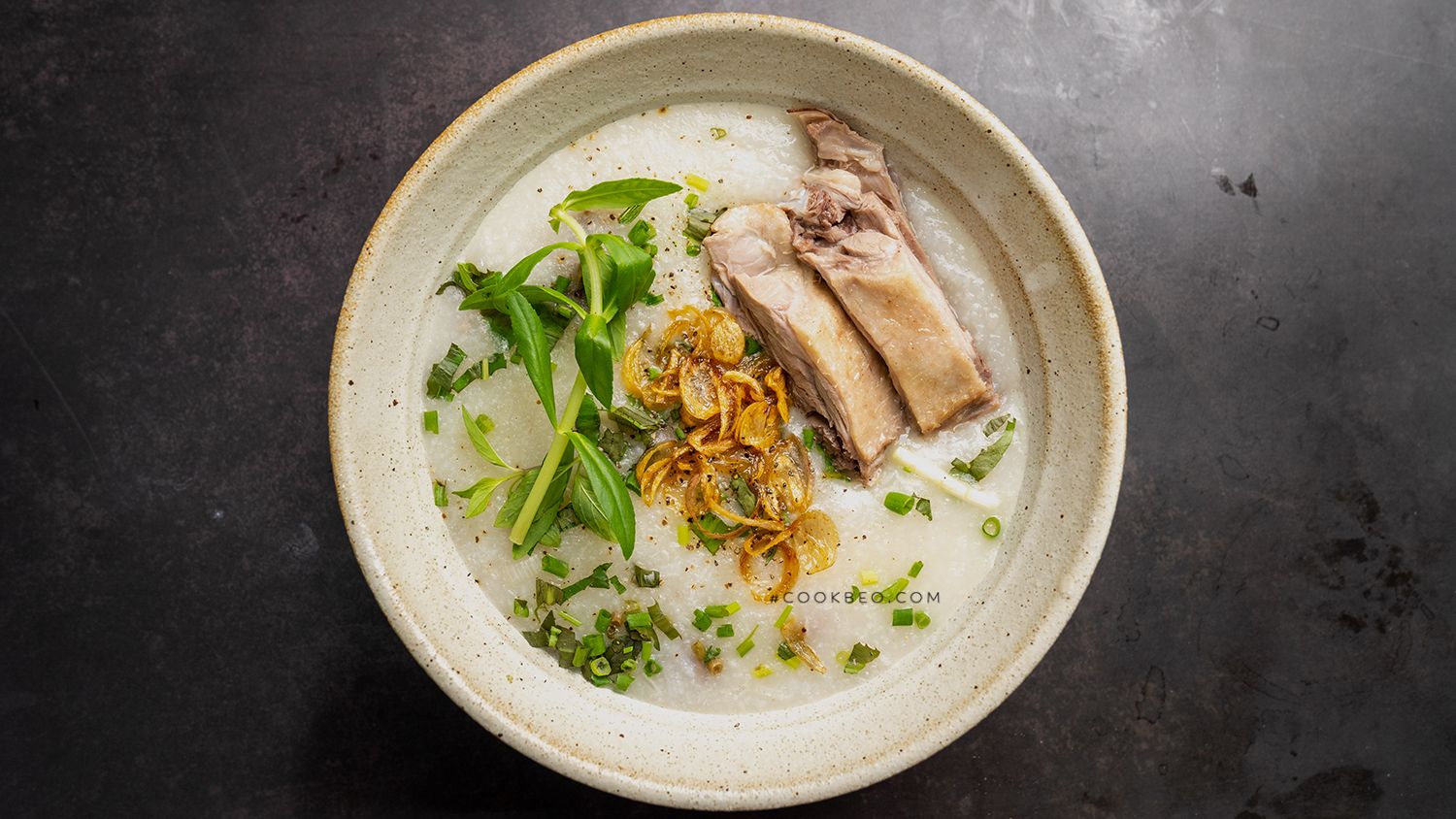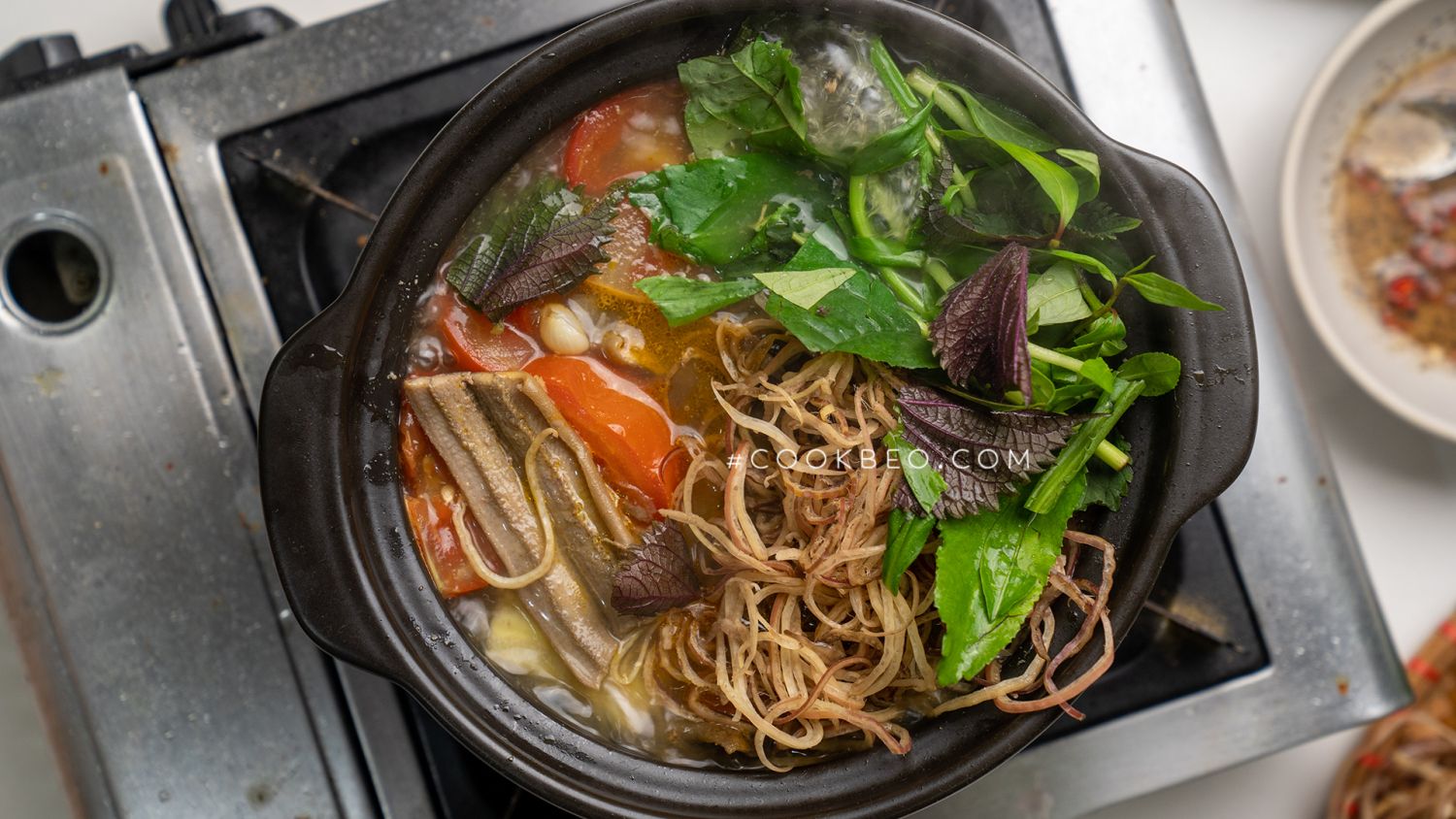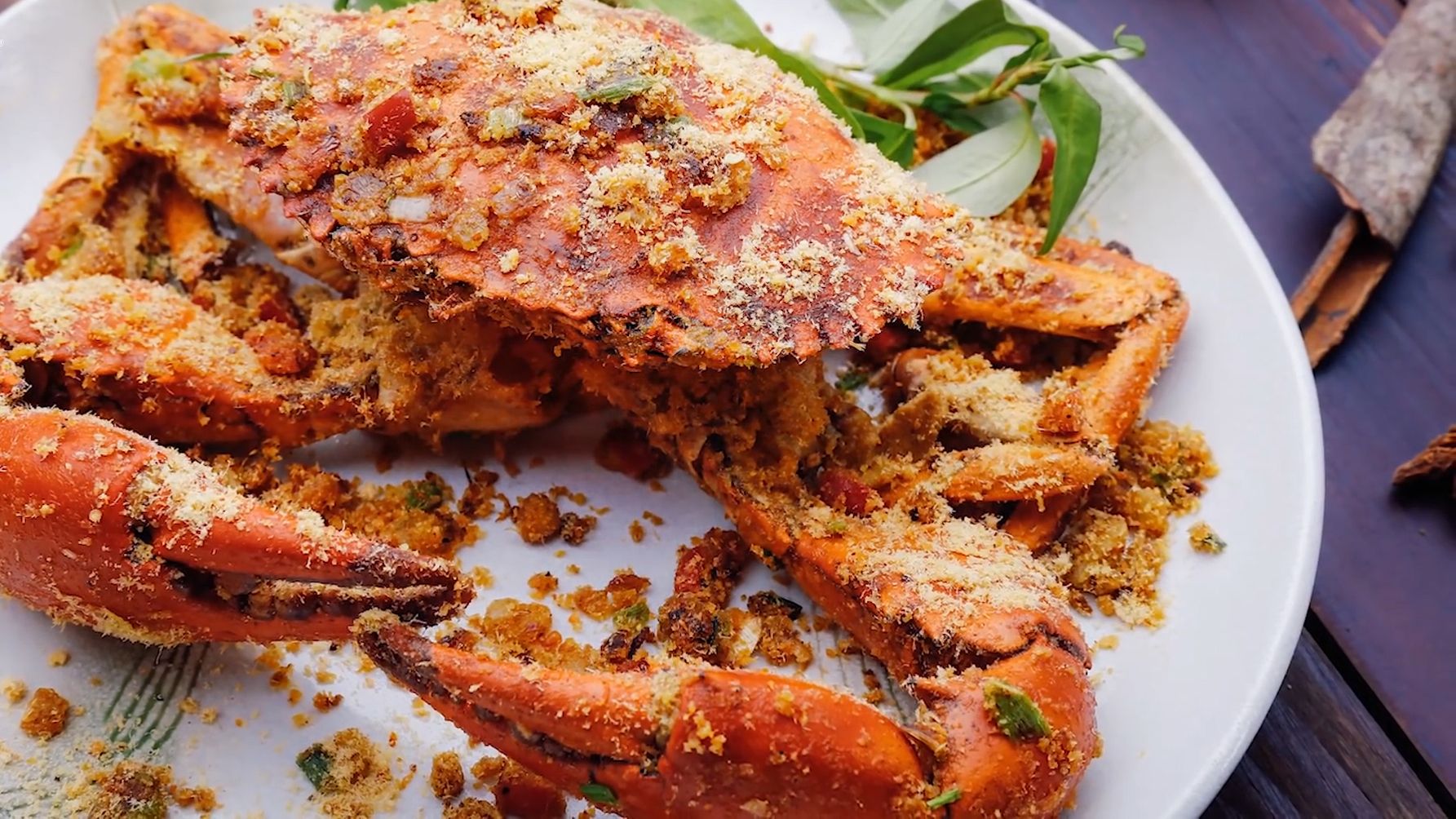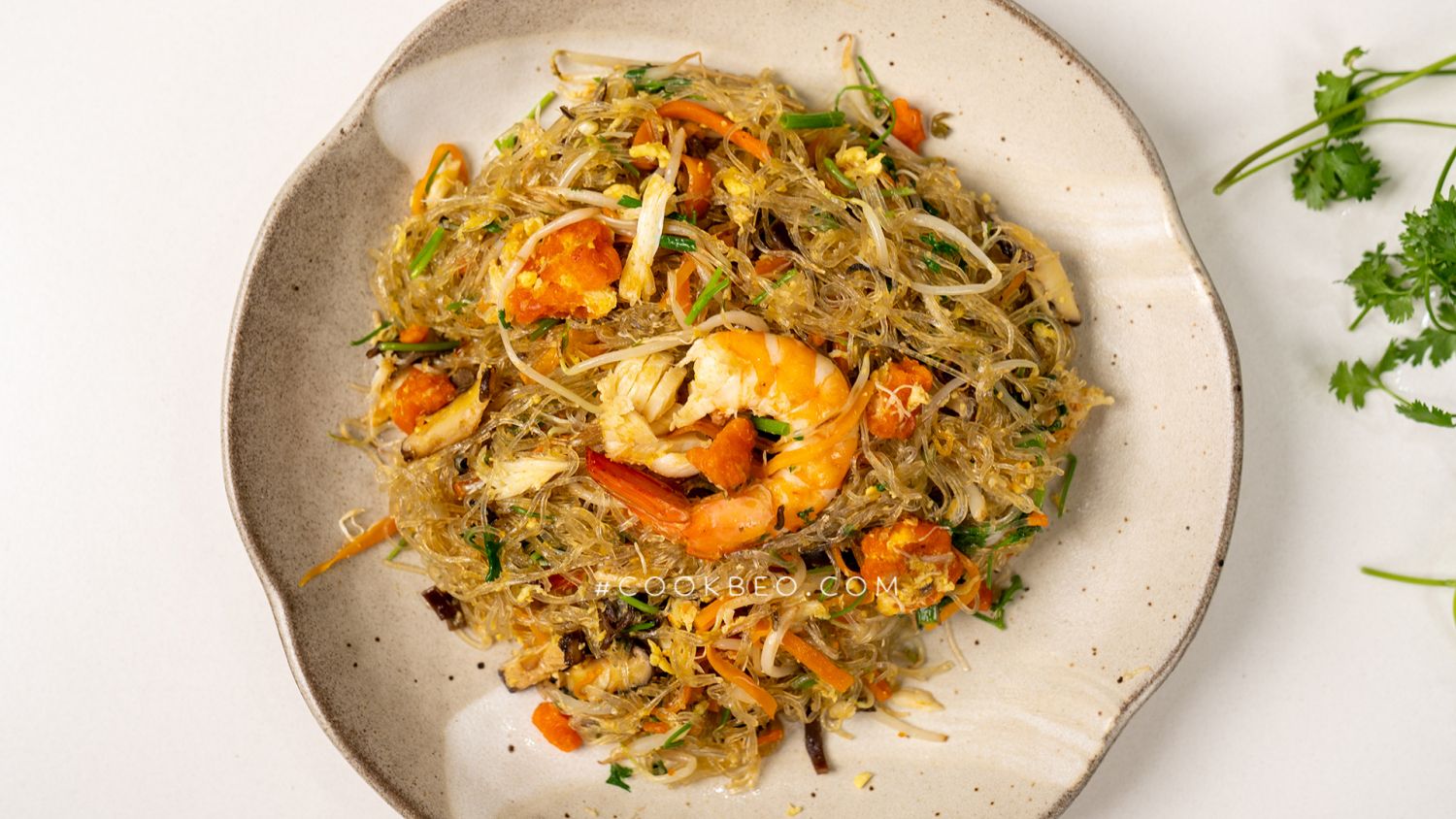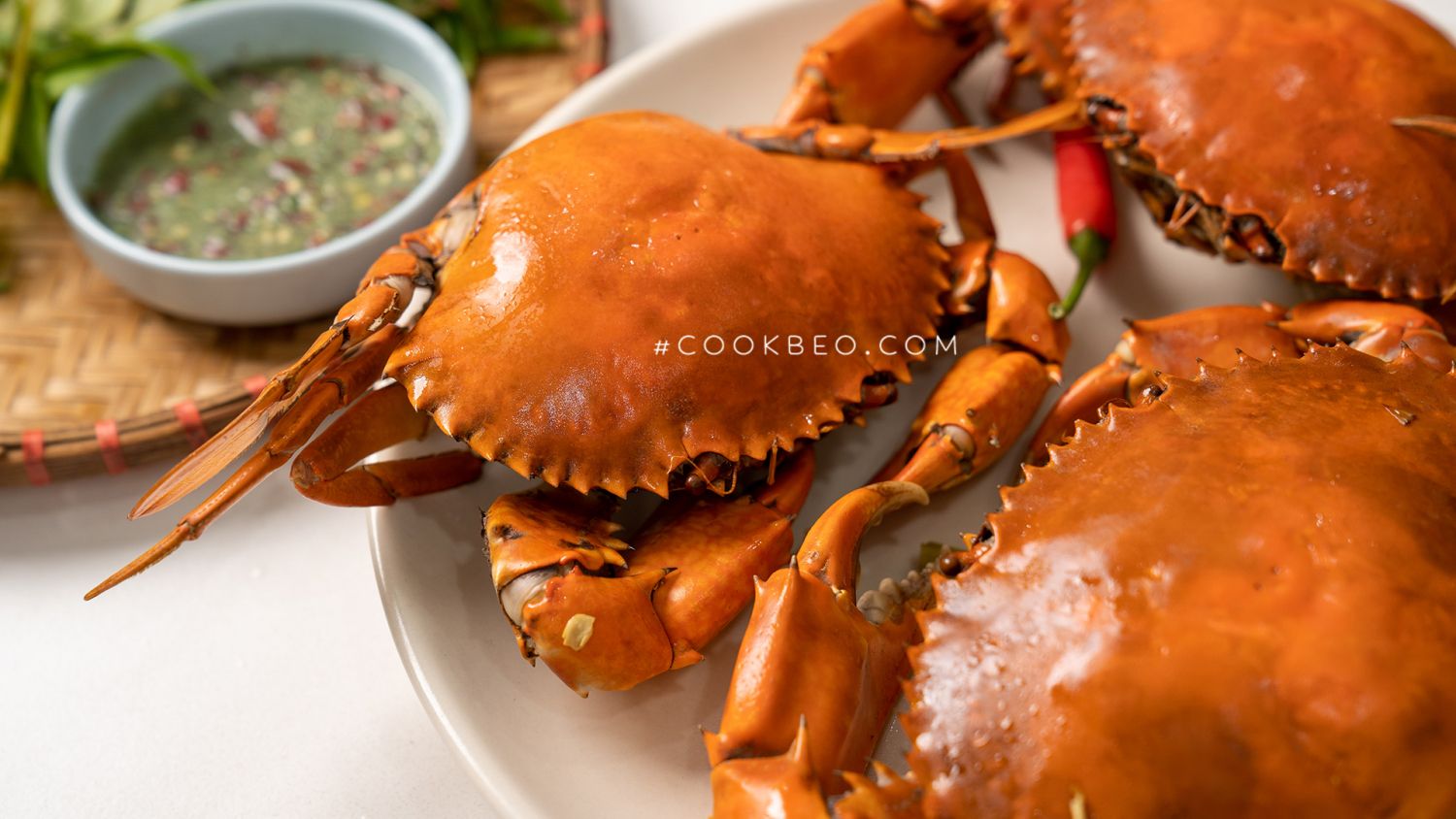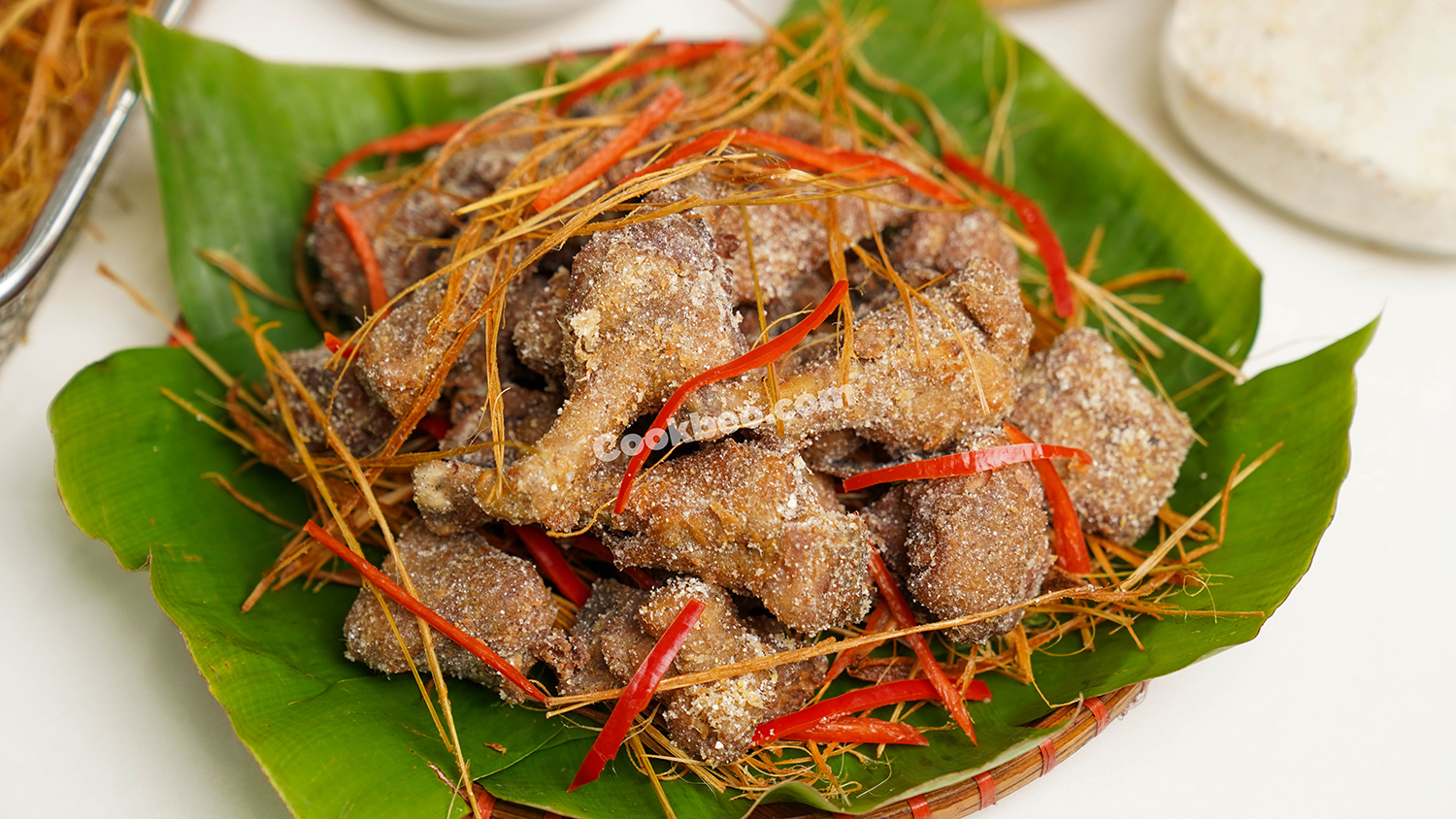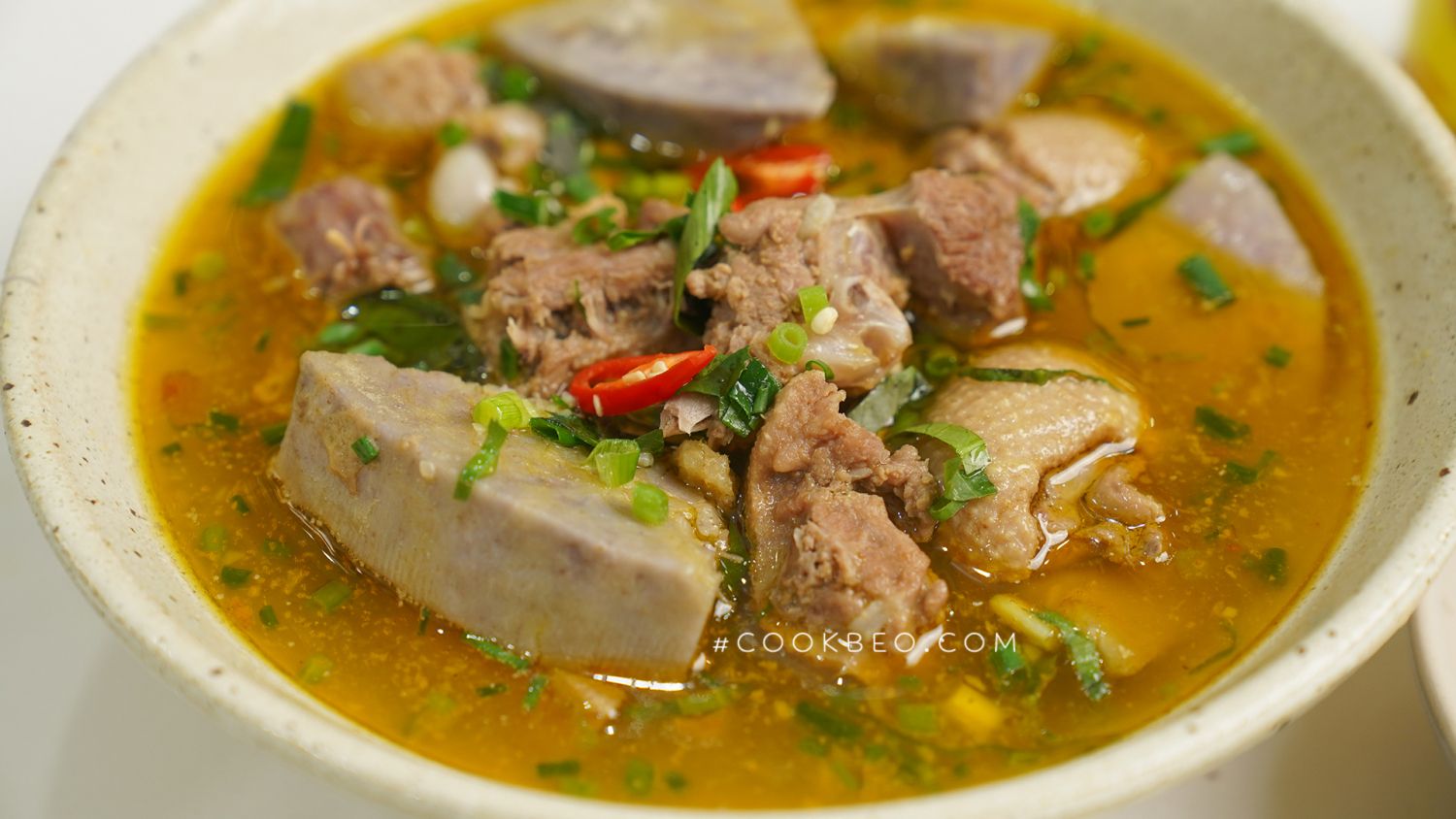How to Make Vietnamese Bún Thang
How to make Hanoi-style bún thang with a clear, delicate broth and carefully prepared ingredients. While the preparation may be a bit elaborate, the result is well worth it.

You can also watch the bún thang cooking video on Cook Béo's YouTube channel.
Ingredients
- 2.5-3 kg round rice noodles
- 1-1.5 kg chicken bones
- 1.2 kg free-range chicken
- 200g pork tenderloin
- 200g Vietnamese pork sausage (giò lụa)
- 70g dried shrimp
- 4-5 chicken eggs
- 60g dried radish
- 10-12 dried shiitake mushrooms
- 1 large bunch of Vietnamese coriander (rau răm)
- 4-5 shallots
- 1 large ginger root
- Seasonings: salt, fish sauce, MSG, sugar
- Accompaniments: lime, chili, shrimp paste

Instructions
Prepare Chicken Bones and Simmer Broth
Thoroughly rub the chicken bones with coarse salt to remove excess fat and any remaining feathers. Rinse well. Boil a pot of water with 1 tablespoon of coarse salt, and when it comes to a boil, add the chicken bones to blanch for 3-5 minutes to clean and remove any odors.
Next, remove the bones, discard the blanching water, rinse the bones again, and place them in a pot. Add water to start simmering the broth for bún thang.
Initially, bring the water to a boil over high heat. Once boiling, reduce the heat to low and let it simmer for about 90 minutes. For chicken bones, 90 minutes is enough time to extract the necessary sweetness for the broth. Occasionally skim off any foam to keep the broth clear. Remember not to season the broth during the simmering process.
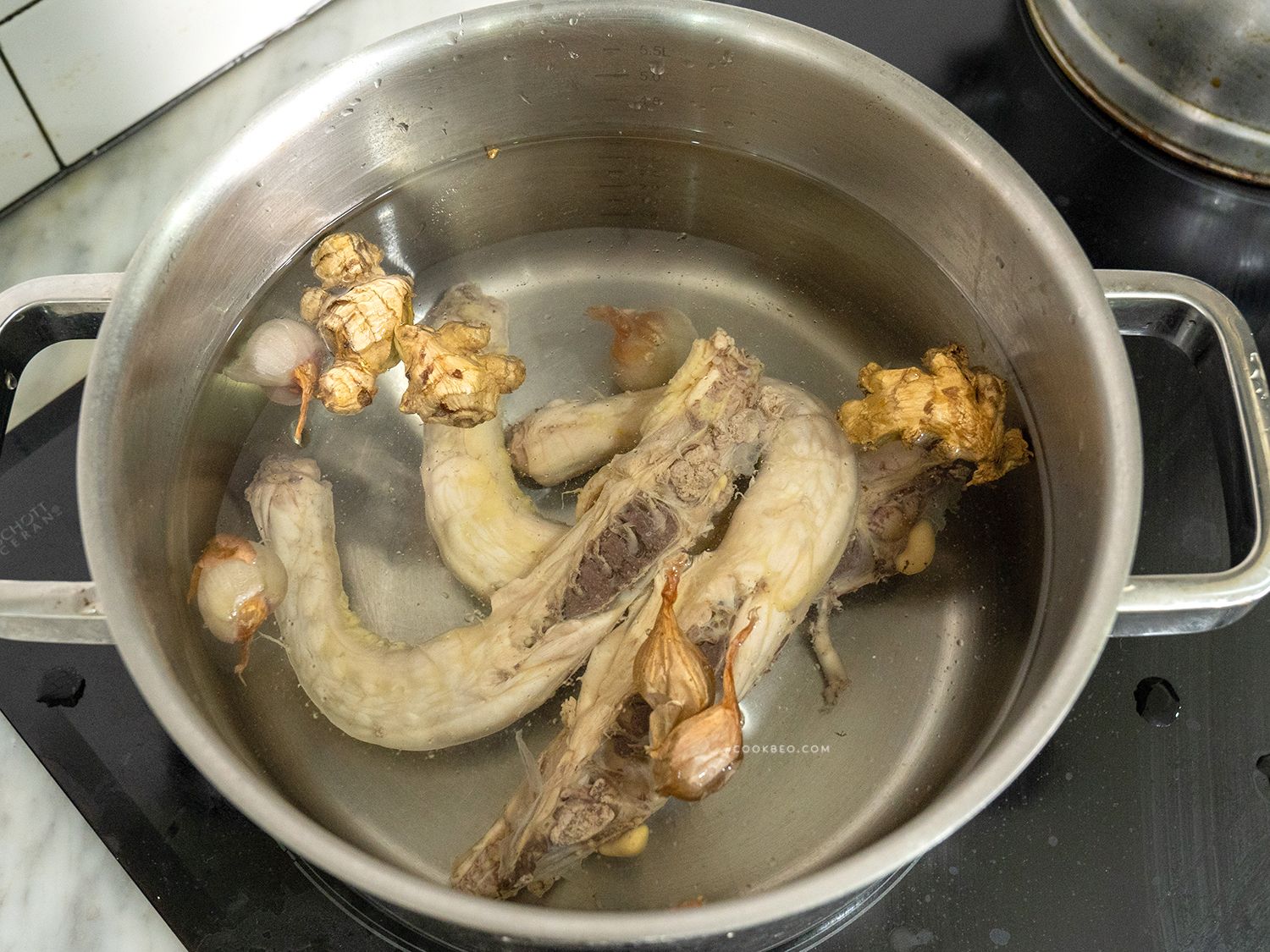
Use the following ratio for the broth: 1 liter of broth is enough for 3 bowls of bún (~330-350ml per bowl). For 12 servings, you'll need about 4.5 liters of broth. However, since the broth will reduce after simmering for over an hour, it's best to start with about 5 liters of water to allow for reduction.
To add fragrance to the broth, include 4-5 grilled shallots and 1 grilled ginger root. After grilling, peel the shallots, scrape off any charred bits from the ginger, rinse them, and add them to the pot. This prevents the broth from becoming cloudy or turning reddish-brown.
Prepare Chicken Meat
Rub the chicken with coarse salt and rinse. When the broth comes to a boil, add the chicken to poach. It takes about 12-15 minutes for the chicken to cook through; if the chicken is older, you may need to poach it a bit longer, around 20 minutes. Remove the chicken and let it cool, then continue simmering the broth.
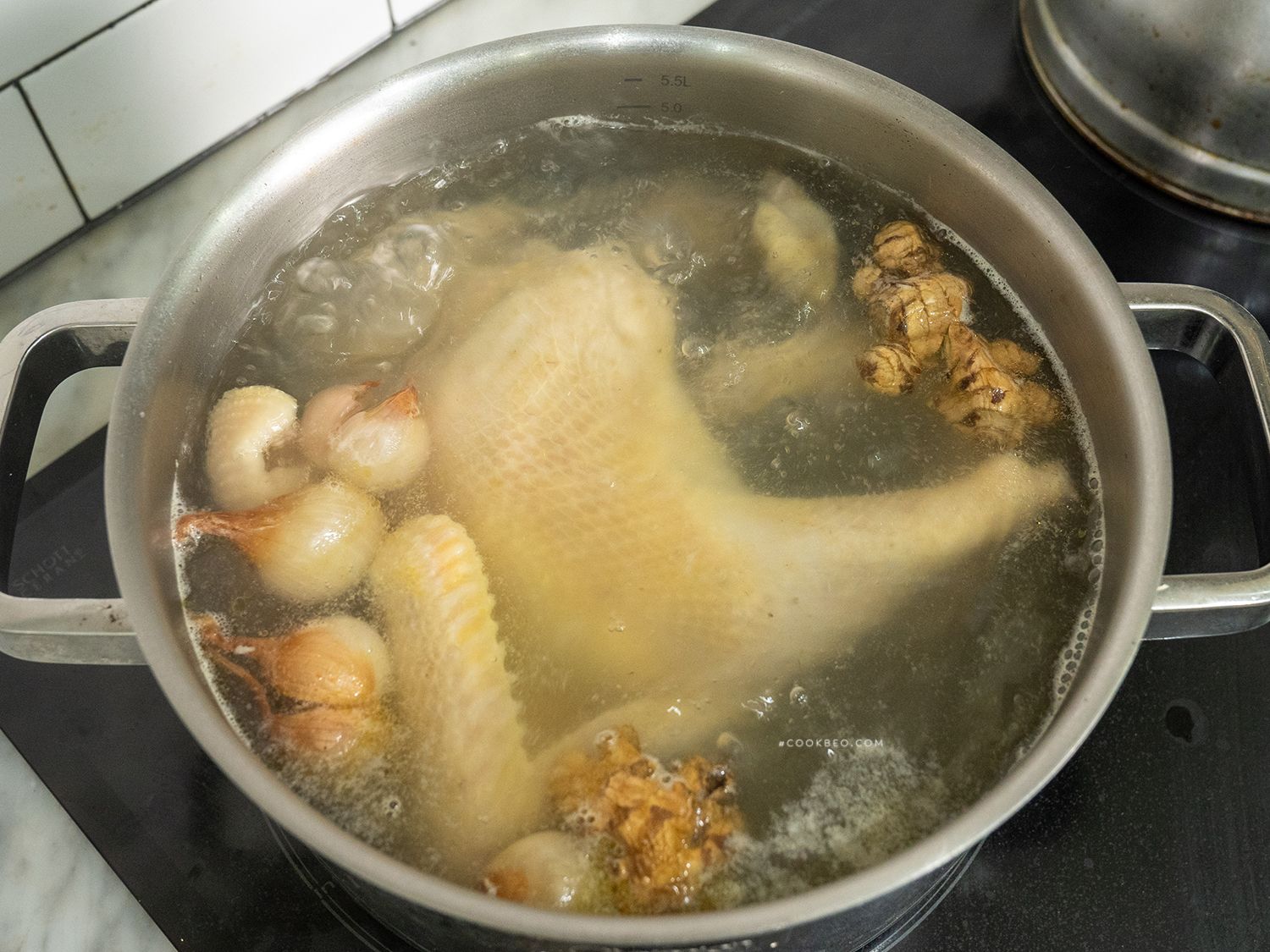
Once the chicken has cooled, separate the skin and slice it into thin strips. Shred the meat or cut it into small pieces, similar to how you would prepare chicken for phở. Return the chicken bones to the pot to continue simmering the broth for added sweetness.

Prepare Dried Shrimp
Rinse the dried shrimp, then dry-roast them until fragrant. Next, pound them into small fibers like floss. You can use a food processor to save time, but pounding by hand gives the shrimp a better texture.
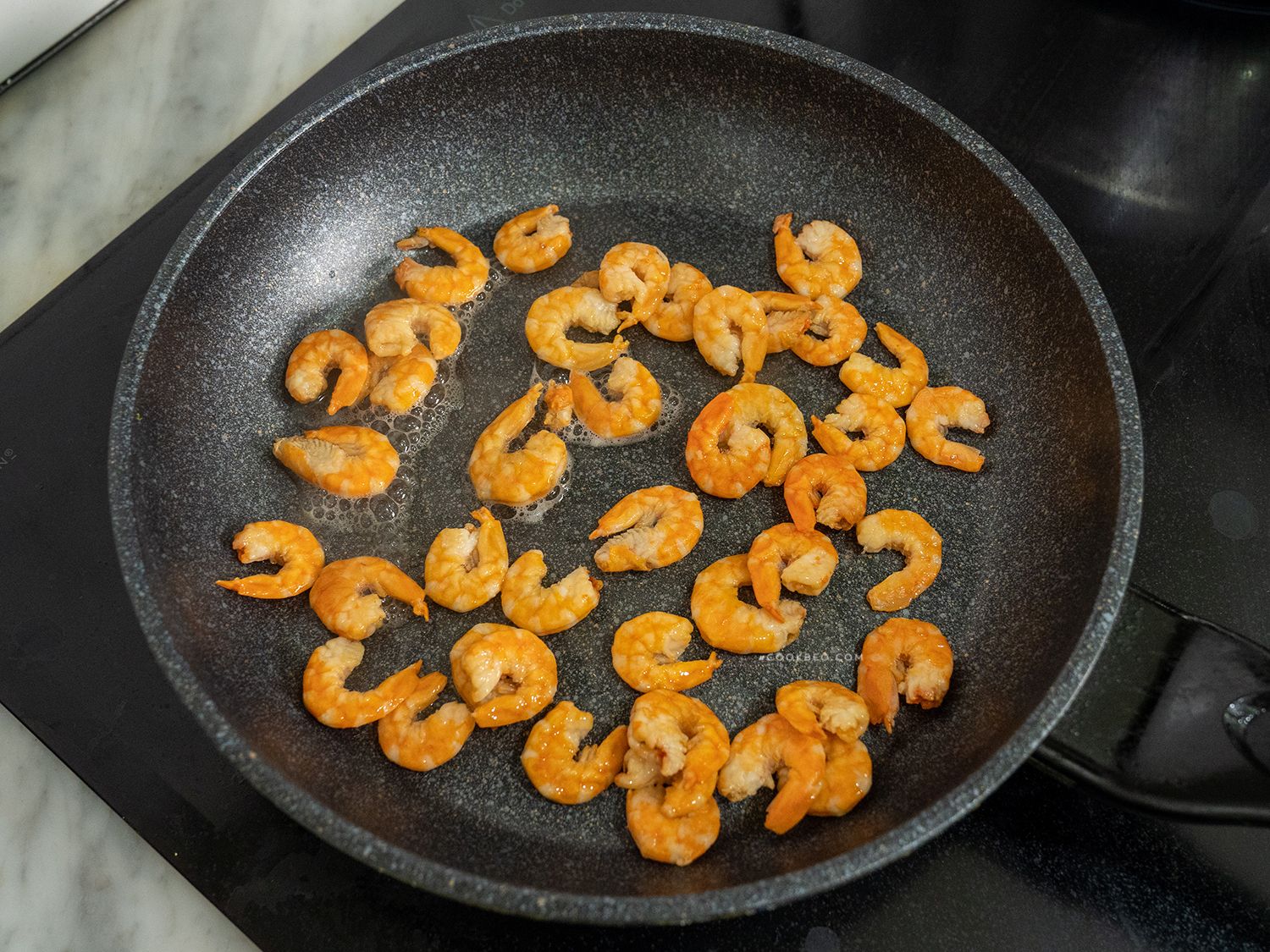

Prepare Squid Tentacles
Clean the squid tentacles, then grill them until fragrant. Scrape off any charred parts to prevent bitterness, then add the squid to the broth to simmer.
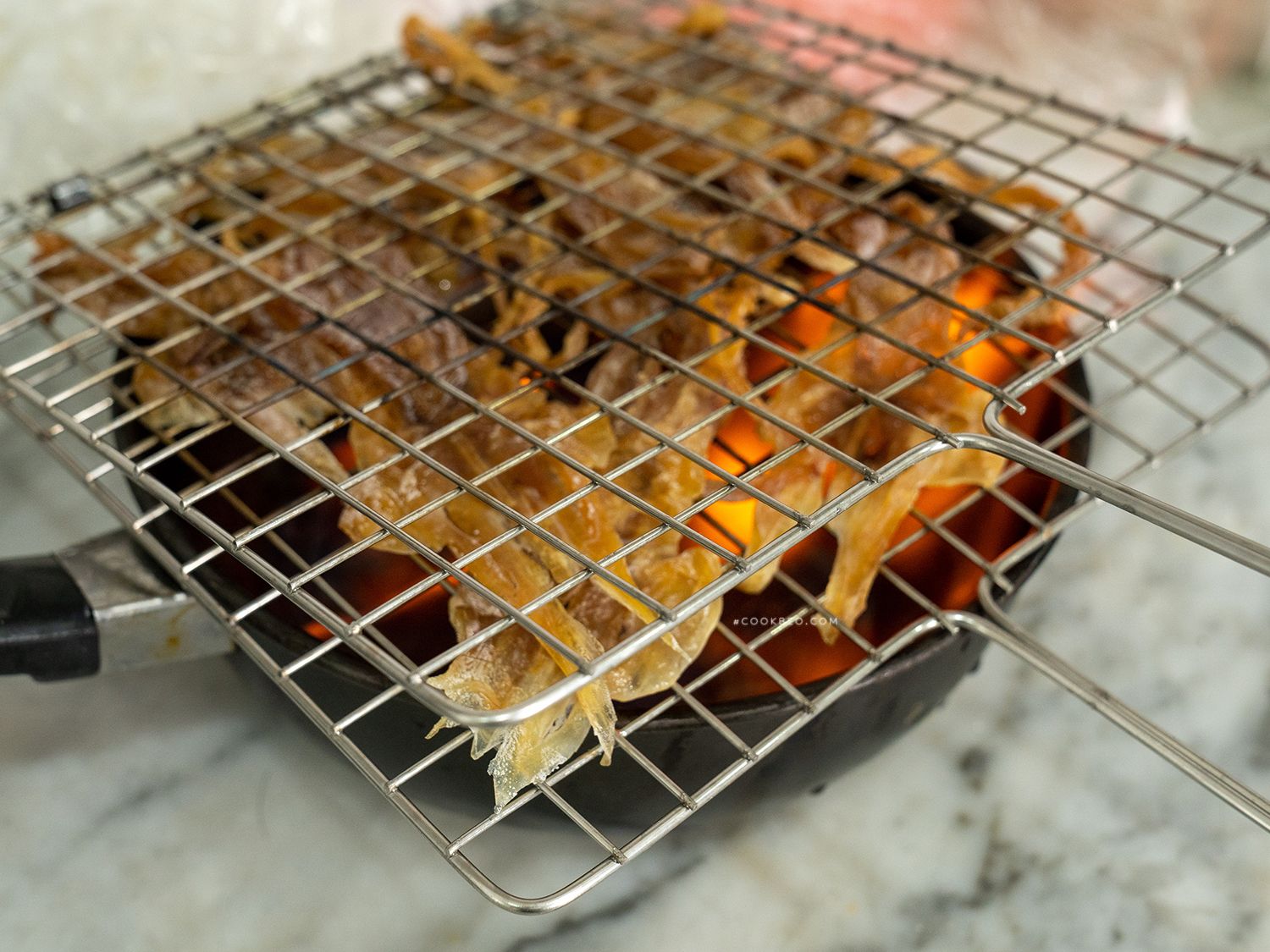
A good bún thang broth should have a touch of "sea flavor," so people often use dried shrimp shells, dried tiny shrimp, squid, sea worms, or water bug essence to enhance the sweetness and aroma. However, since sea worms and water bug essence can be expensive, you can opt for more affordable ingredients to achieve that "sea flavor" for a delicious bún thang.
Prepare Vietnamese Pork Sausage (Giò Lụa)
Slice the Vietnamese pork sausage into thin slabs, then carefully cut into fine strips. Since the sausage tends to dry out quickly after slicing, it's best to slice it just before serving or wrap it tightly and refrigerate after slicing.
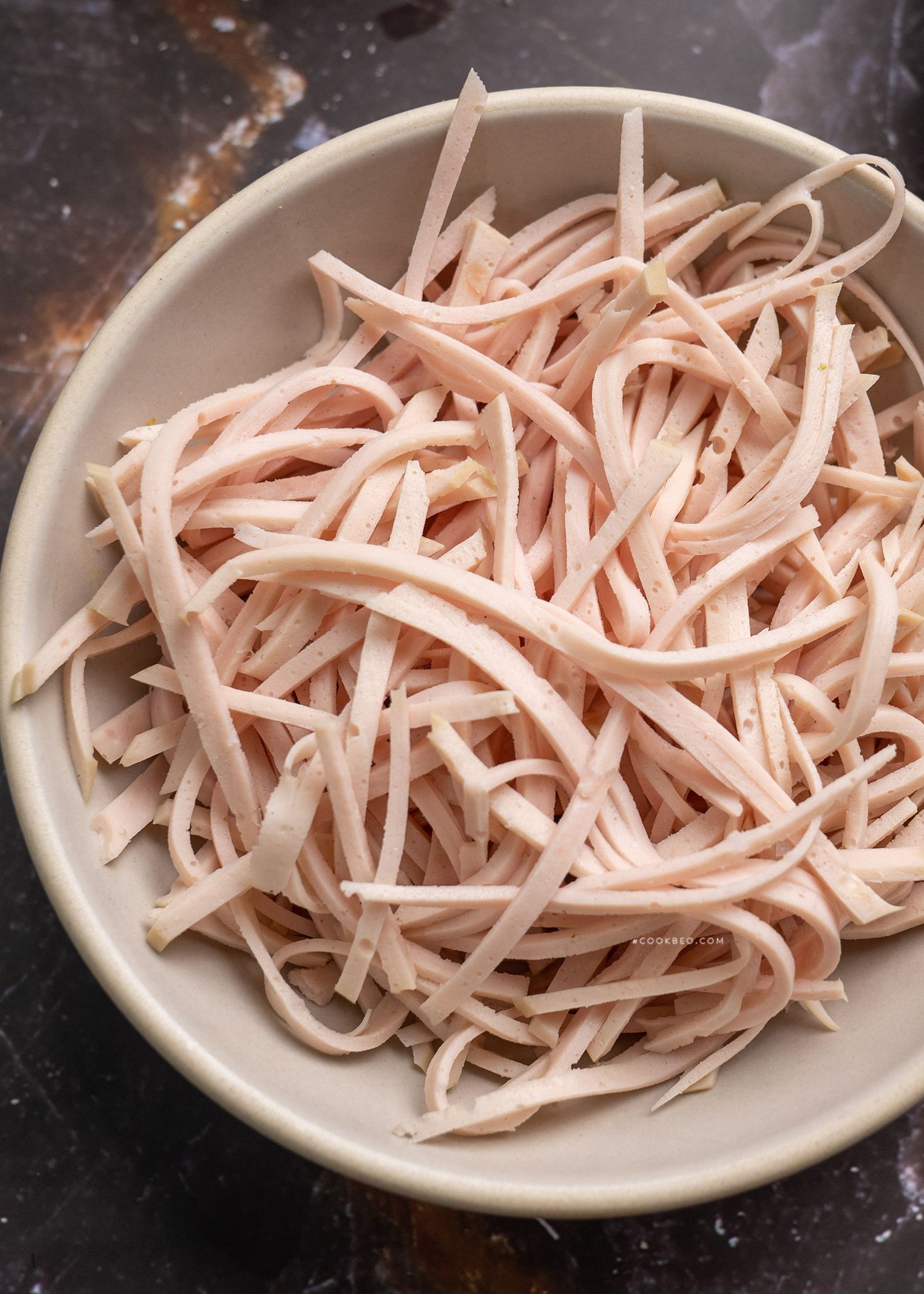
Prepare Eggs
Crack the eggs into a bowl. To make the eggs light and fluffy without any fishy smell, add a few drops of white wine and vinegar, then beat well.
To make thin omelets that don’t stick to the pan, it’s best to use a non-stick pan. If your pan is not very non-stick, lightly coat it with a bit of oil as a base.
Heat the pan (to about 40-50°C), pour in the egg mixture, and quickly swirl the pan to create a thin, even layer. Pour any excess egg back into the bowl, then reduce the heat to medium-low. This technique ensures the omelet is very thin, producing fine, delicate strips when sliced, resembling golden silk threads.
Occasionally tilt the pan to allow the edges to cook faster and separate from the pan. Once the omelet is cooked and slightly dry, it will naturally detach from the pan. Use chopsticks to flip it over for a few seconds, then transfer it to a plate. Repeat until all the eggs are cooked.
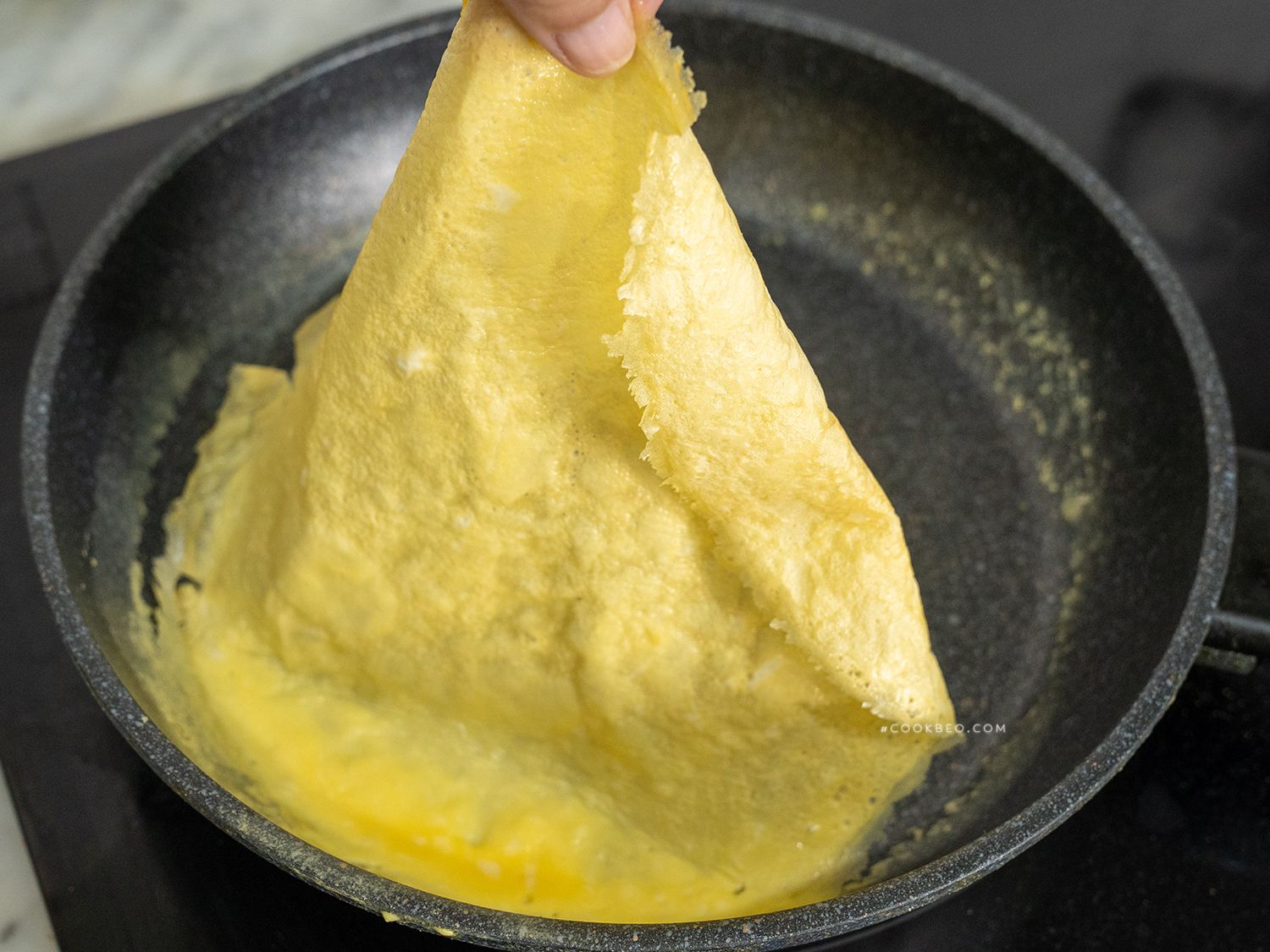
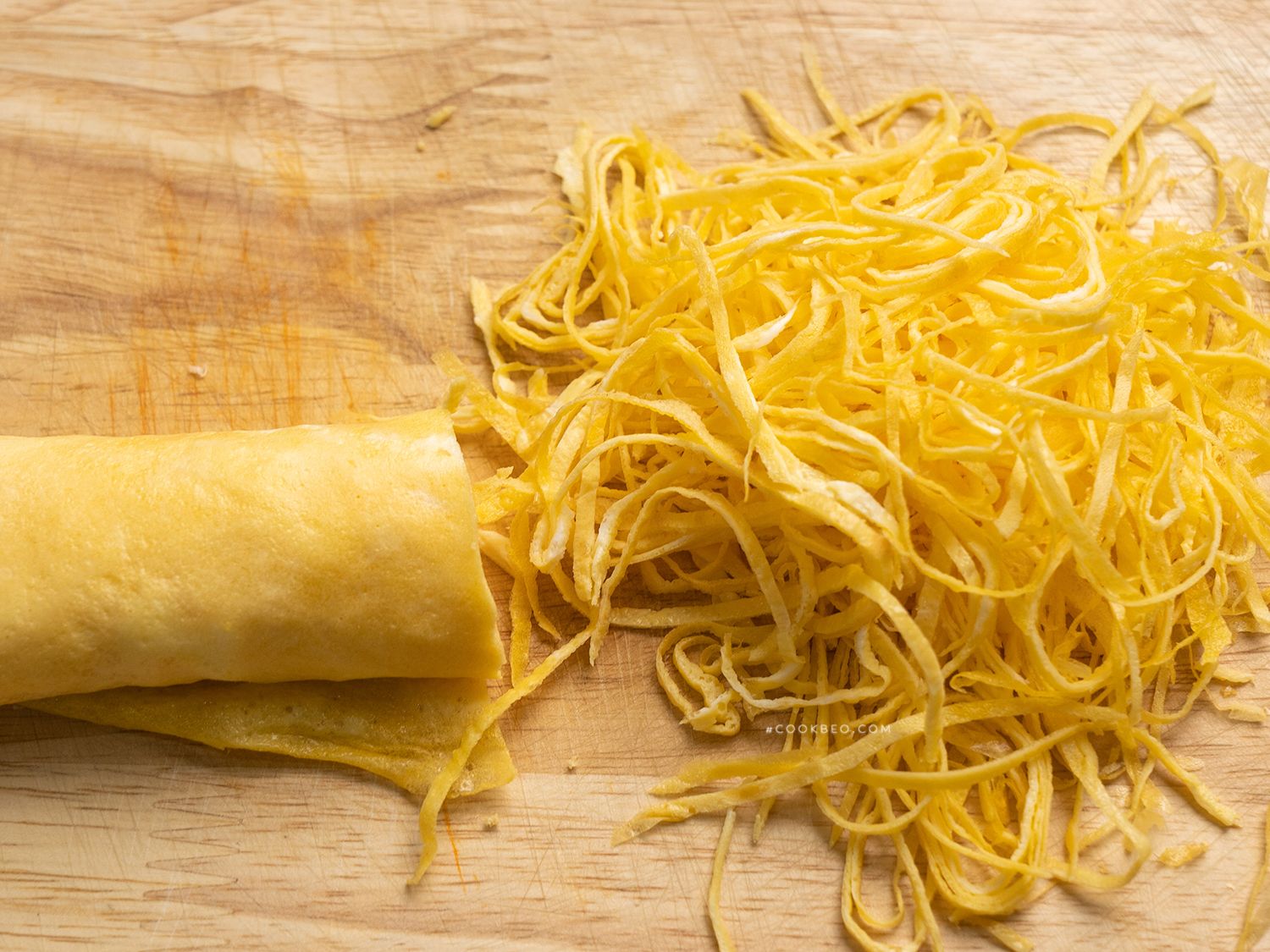
In addition to fried eggs, some people also add salted eggs to bún thang. However, like shiitake mushrooms, adding salted eggs is a matter of personal taste and can be a topic of debate.
Prepare Dried Radish
Dried radish is added to bún thang to provide a refreshing crunch, helping to balance the dish’s flavors and prevent it from being too rich.
Rinse the dried radish thoroughly to remove any dust, then soak it in warm water for about 30 minutes. Rinse several times until the radish softens and loses its reddish-brown color. Squeeze the radish dry, shred it, and let it drain in a basket.
You can also boil the dried radish (similar to boiling bamboo shoots), rinse, drain, and shred it.
Once the radish is dry, place it in a bowl. Mix 2 tablespoons of fish sauce, 2.5 tablespoons of vinegar, and 1 tablespoon of sugar until the sugar dissolves, then pour over the radish. Add some julienned ginger and minced chili, and mix well.

Dried radish comes in two types: the thin strips are often used for bún thang and salads, while the thicker strips are typically used in braised dishes, offering a different but equally delightful texture compared to fresh radish.
Prepare Shiitake Mushrooms
Whether or not shiitake mushrooms belong in bún thang is still debated, but a light hint of mushroom fragrance in the broth can be quite appealing. If you decide to use shiitake mushrooms, add them sparingly, as too many can overwhelm the dish’s other flavors.
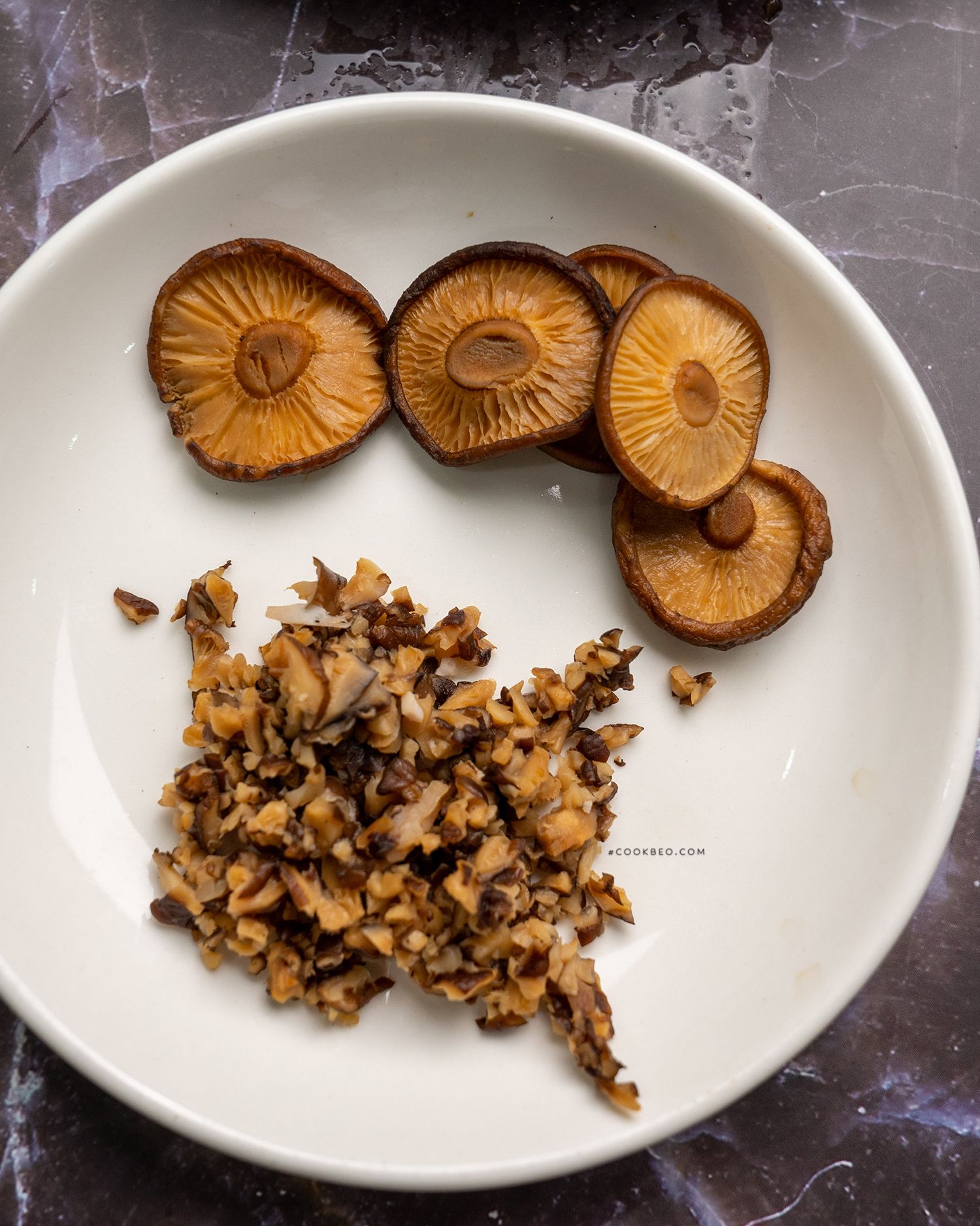
If using shiitake mushrooms, rinse them quickly, then soak in water for about 20 minutes until they soften. Rub them with a little salt, rinse again, and squeeze out excess water. Finely chop half of the mushrooms to sauté with the pork tenderloin, leaving the rest whole to add to the broth. Add the mushrooms about 10 minutes before turning off the heat to infuse the broth with their aroma.
Prepare Pork Tenderloin
There are two common ways to prepare pork tenderloin for bún thang: boiling it and shredding it like the chicken, or stir-frying it with a bit of shiitake mushroom, known as 'ruốc sỏi.'
'Ruốc sỏi' gets its name because the pork is ground or chopped into small, pebble-like granules. Marinate the pork with 1 tablespoon of fish sauce, 1/2 tablespoon of MSG, and 1/2 tablespoon of ground pepper. Mix well and let it marinate for about 25-30 minutes.
Next, heat just enough oil to coat the pan, sauté the finely chopped shiitake mushrooms until fragrant, then add the pork. Stir-fry until the pork is just cooked and firm. Transfer the pork to a separate bowl. Be careful not to overcook it, as the minced pork can become dry.

Prepare Other Ingredients
Pick and clean the Vietnamese coriander, then chop it roughly. Unlike other noodle dishes, authentic bún thang only requires Vietnamese coriander to balance the fishy flavors of the shrimp and squid.
Blanch the rice noodles in boiling water, then drain.
Prepare 4-5 limes, wash them, and cut into quarters. Wash 5-6 bird’s eye chilies, then slice them thinly on the diagonal.
Additionally, bún thang requires shrimp paste for extra depth of flavor. Sauté the shrimp paste with a little oil to mellow its sharpness before serving. Add the shrimp paste to the bowl only after pouring in the broth (similar to adding lime or chili).
Cook Bún Thang
After the broth has simmered for the appropriate amount of time and developed a sweet flavor, remove the chicken bones, grilled shallots, ginger, and squid tentacles. Now, season the broth to taste. For about 4.5 liters of broth, add 3 tablespoons of coarse salt, 2 tablespoons of sugar, 1/2 tablespoon of MSG, and nearly 1.5 tablespoons of fish sauce. Adjust the seasoning to your taste, keeping in mind that the broth should be slightly more flavorful than regular soup since it will be served with noodles.
Stir well to dissolve the seasonings and combine with the broth. Add the shiitake mushrooms and simmer for another 5-10 minutes.
Place the blanched noodles in a bowl, then neatly arrange the chicken, pork, egg strips, Vietnamese pork sausage, dried radish, and Vietnamese coriander in a circular pattern around the bowl. Use a ladle to pour the broth from the bottom of the pot over the noodles, then sprinkle the shrimp floss in the center.

To enhance the flavor and keep the broth hot longer, some people pour the broth over the noodles, then drain it back into the pot before pouring a second time.
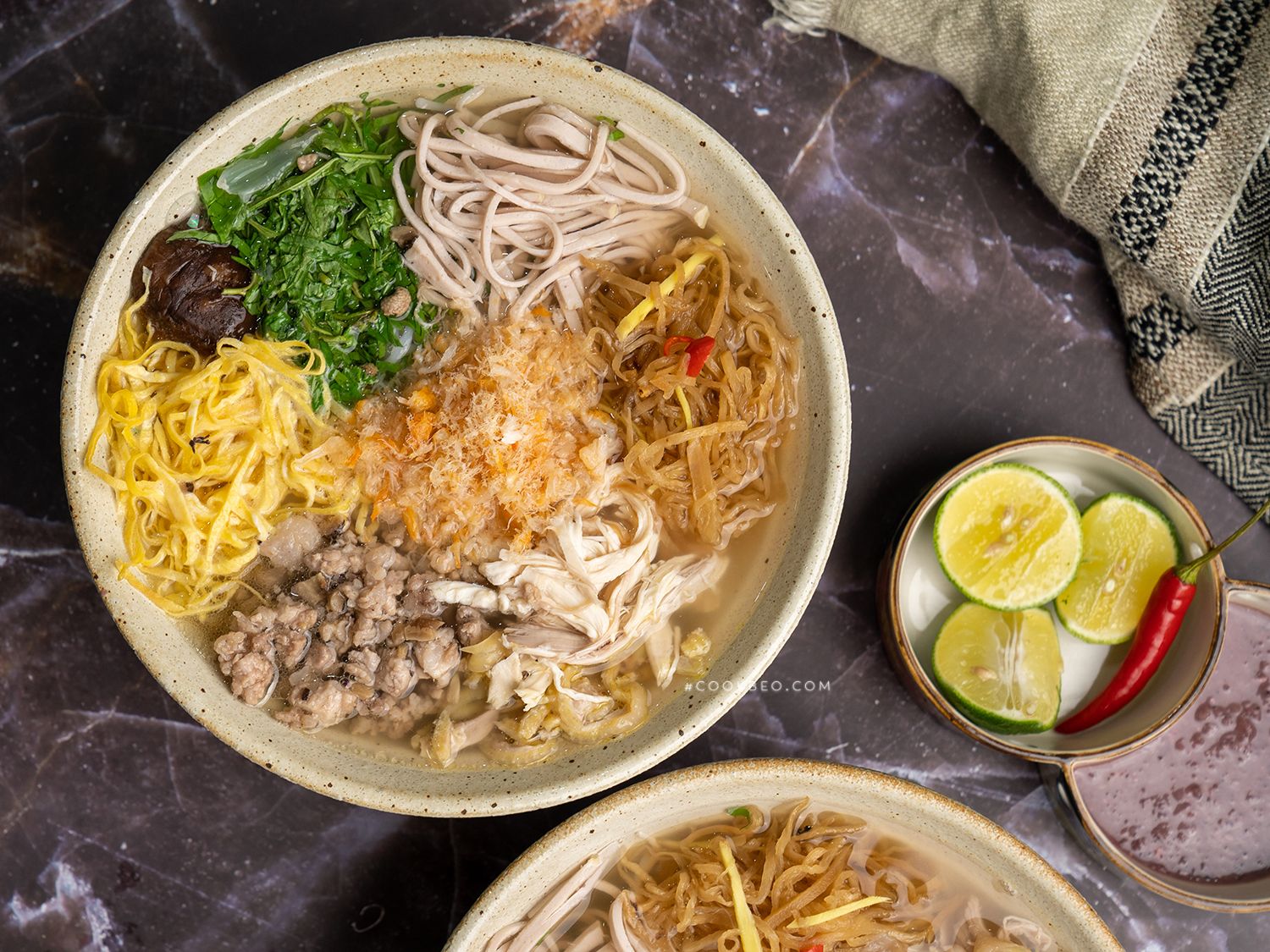
Final Product Requirements
Bún thang is an incredibly visually appealing dish, with its vibrant and fresh colors, and the beautifully arranged toppings. The first taste will win you over with its rich yet delicately sweet broth.
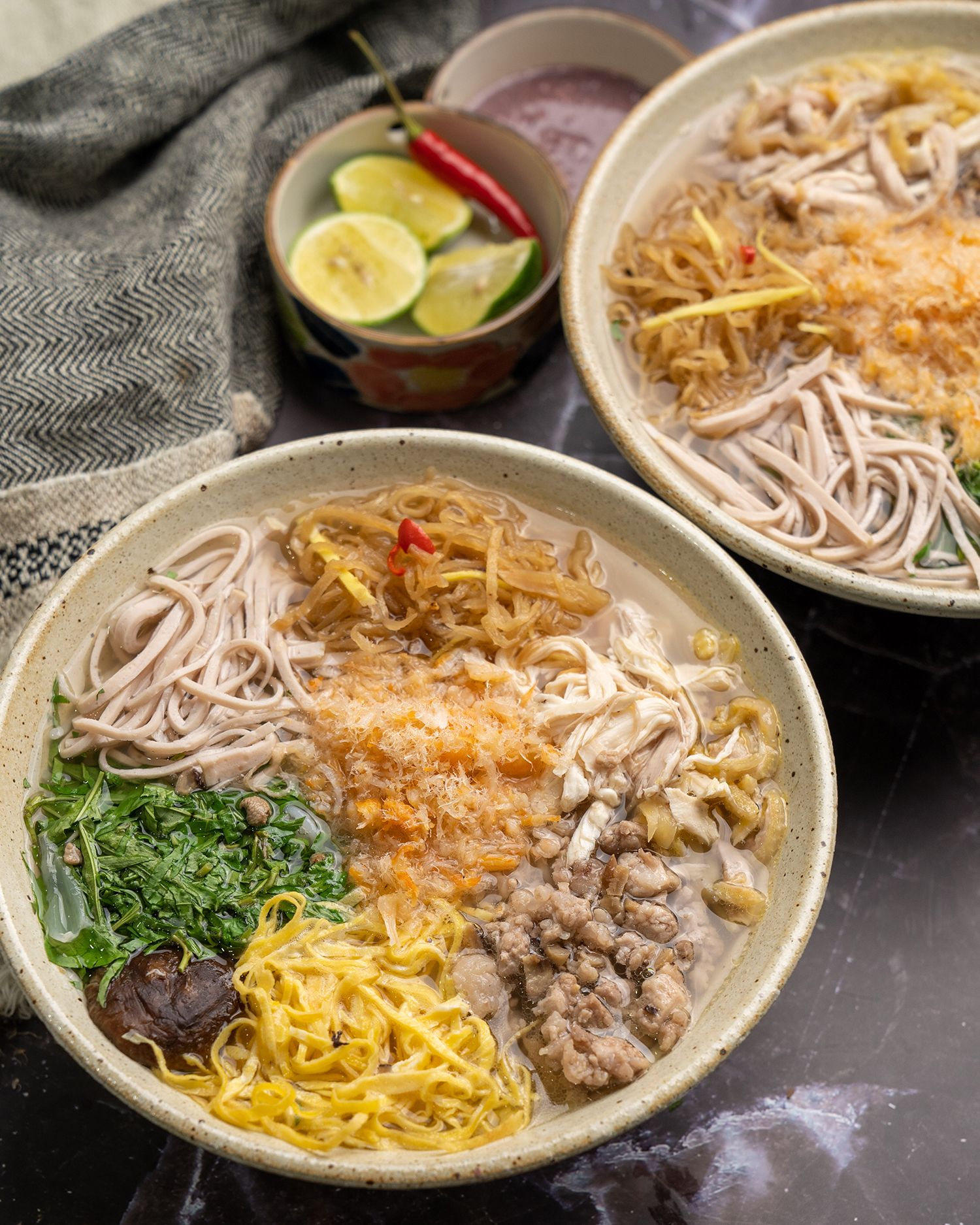
Enjoying a bowl of bún thang is not just a culinary delight but a feast for the eyes as well. Particularly during Tet, sharing this light and flavorful noodle soup with family adds to the warmth and joy of the holiday season.
Additional Information
Bún thang is a dish rooted in Hanoi's tradition of repurposing leftovers after the Lunar New Year celebrations. Typically, after Tet, kitchens are still stocked with meats, eggs, and various other foods. Resourceful Hanoian homemakers would creatively combine these ingredients into a noodle soup, resulting in a dish that is both flavorful and economical.
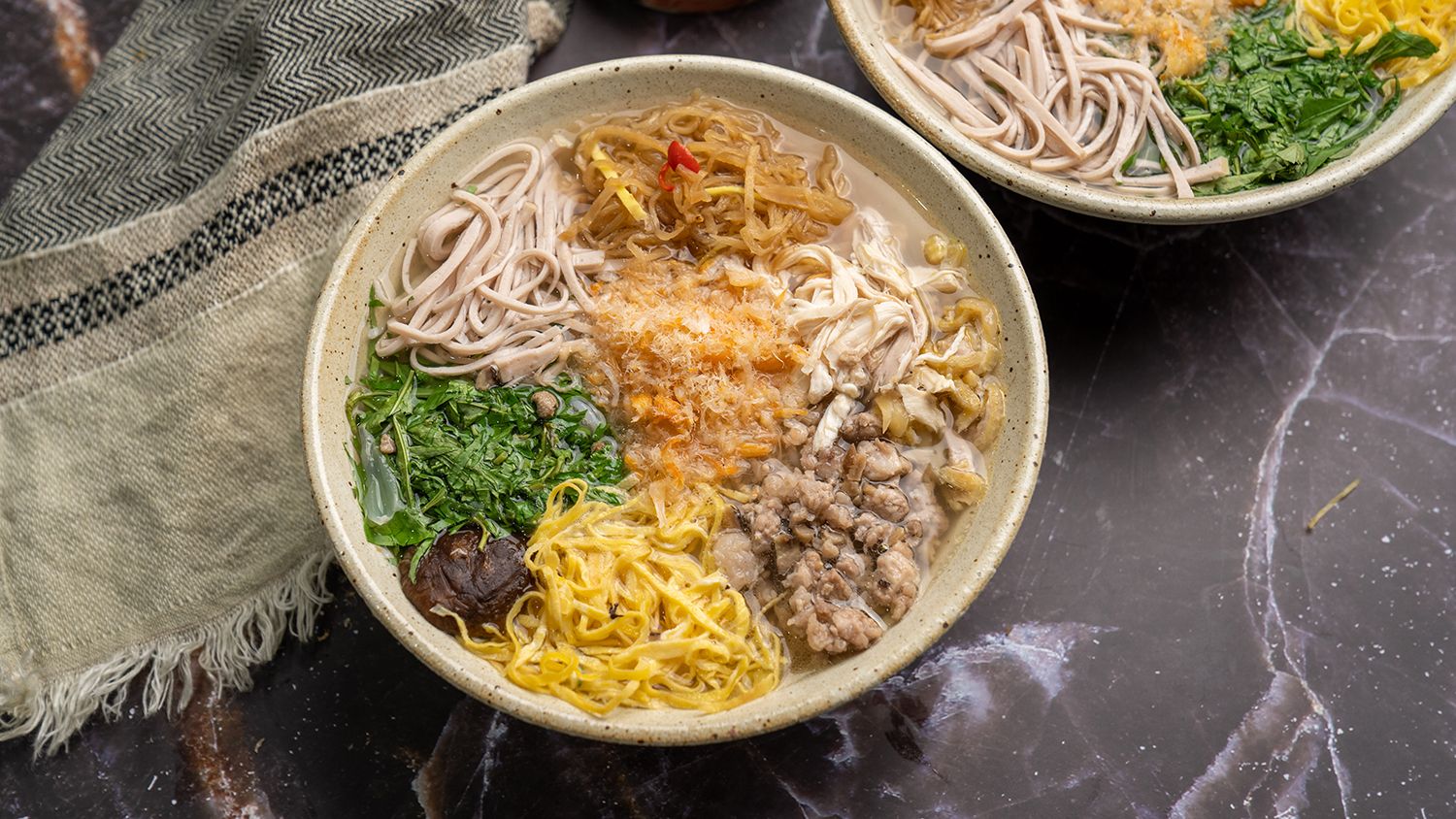
Bún thang is essentially a noodle soup, with various ingredients arranged in a circular pattern, much like the preparation of herbal medicine, which is how it got its name. The broth is delicate, yet packed with flavor, and despite its origins as a "leftover dish," bún thang is prepared with meticulous attention to detail and a multitude of steps.




